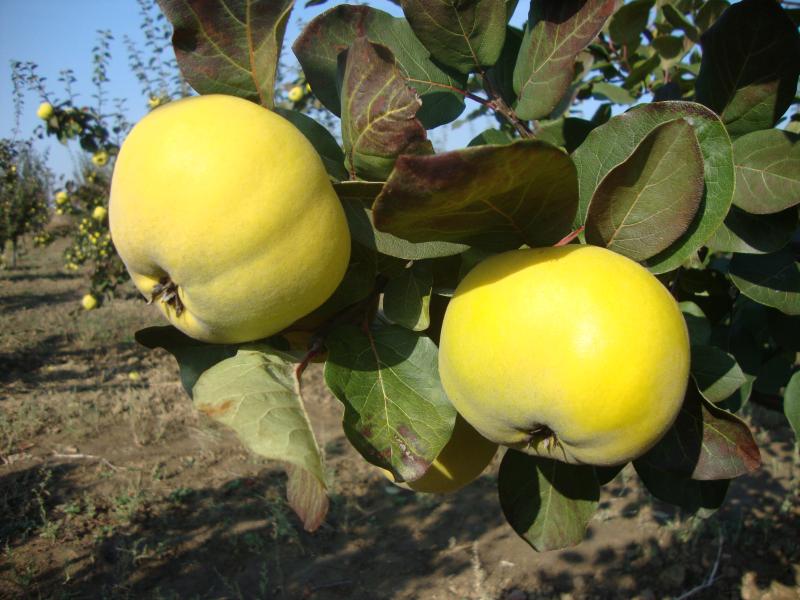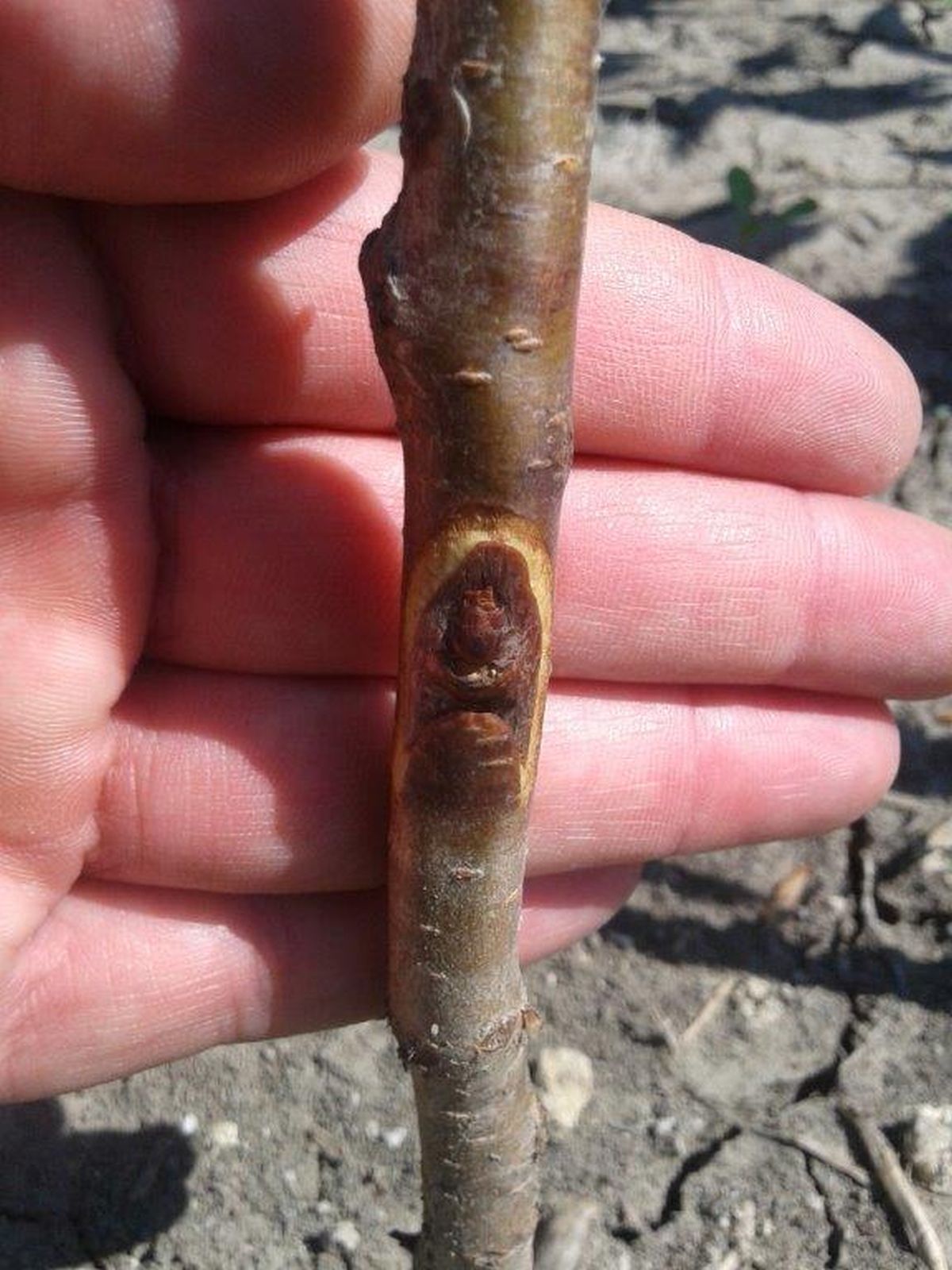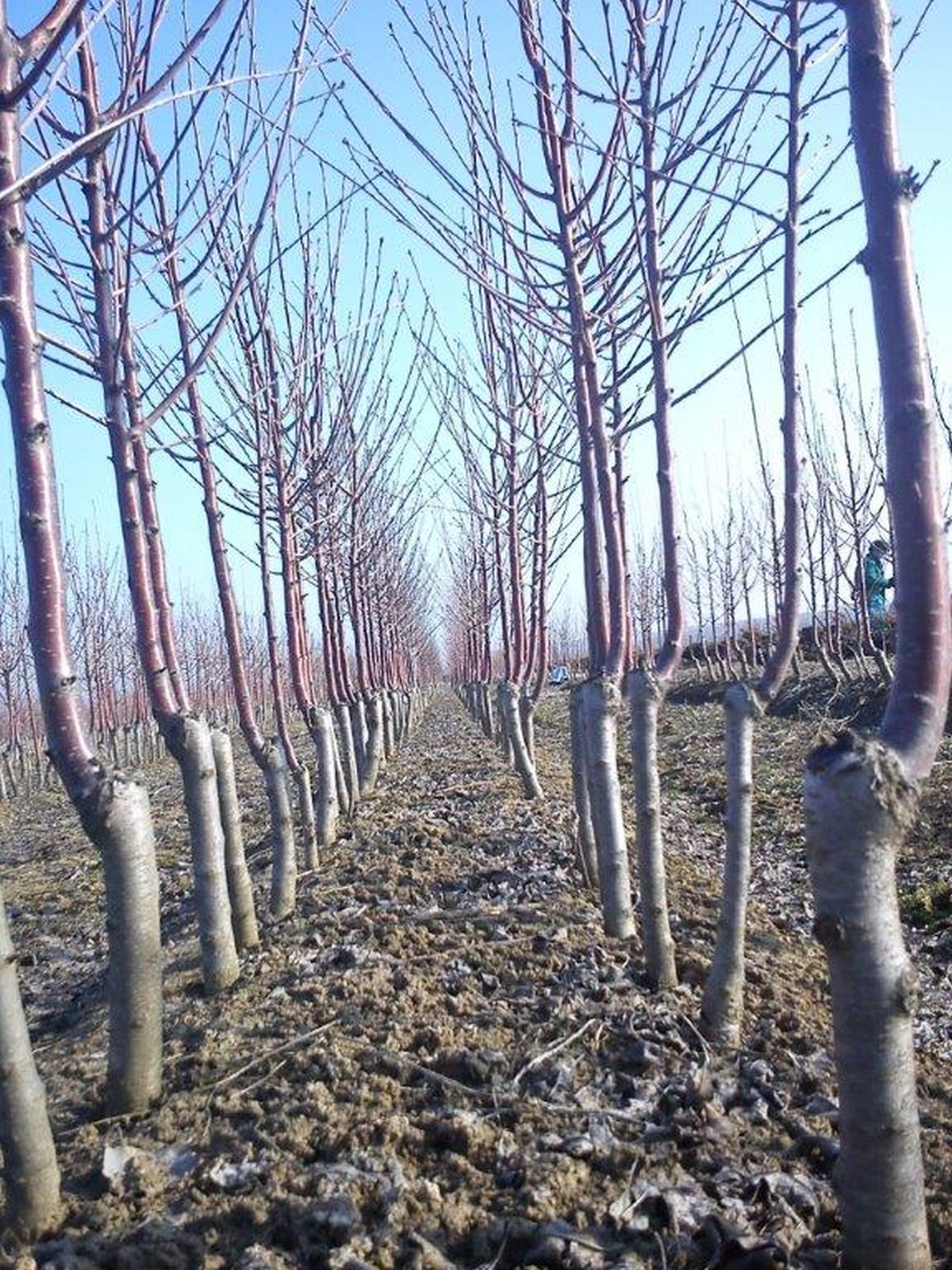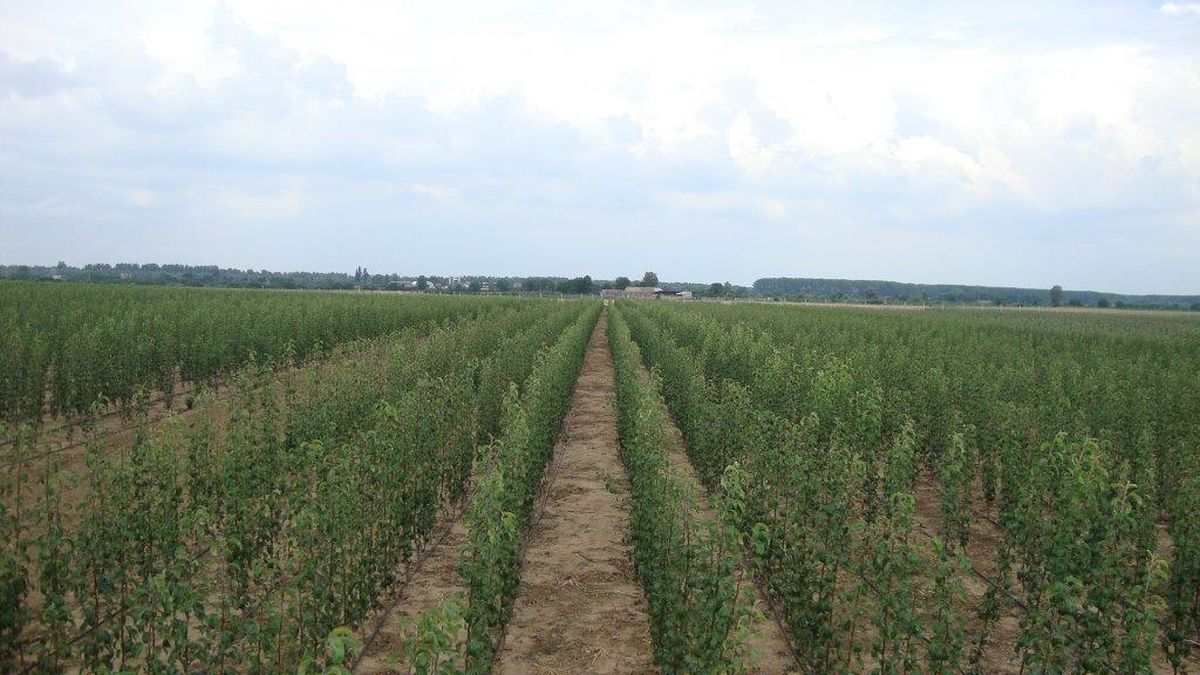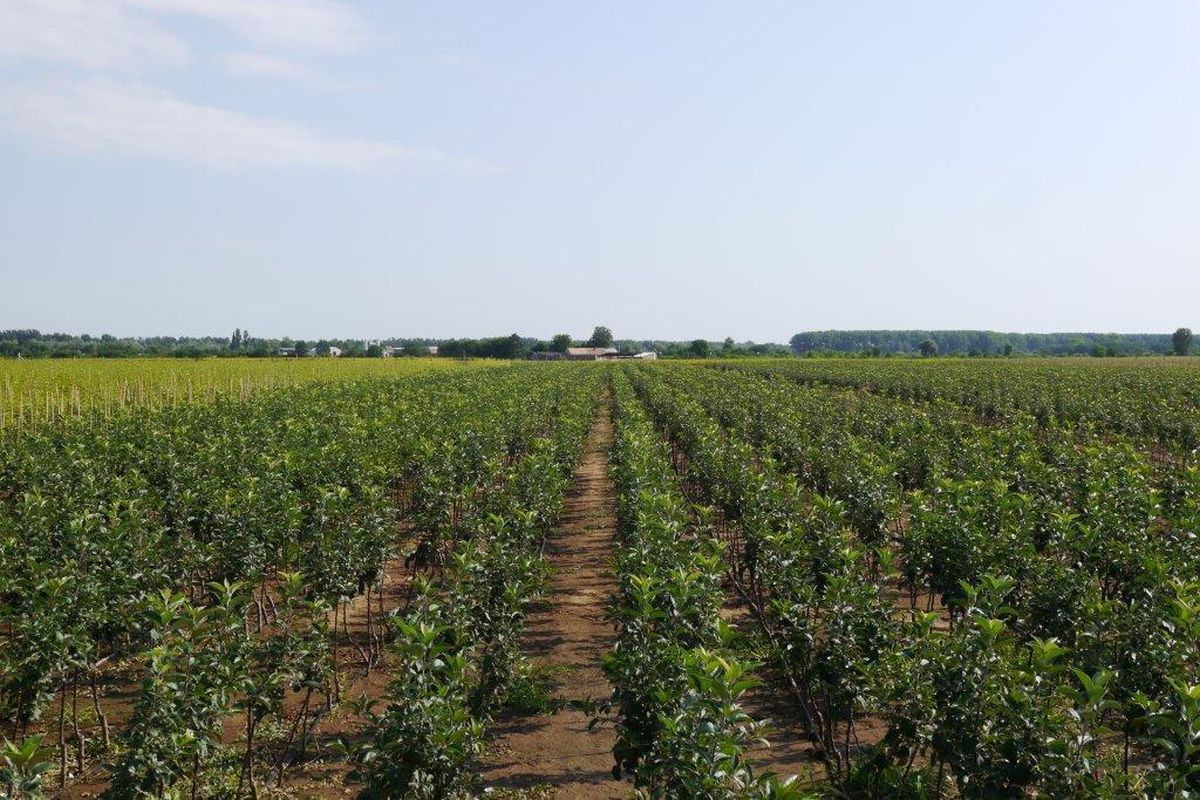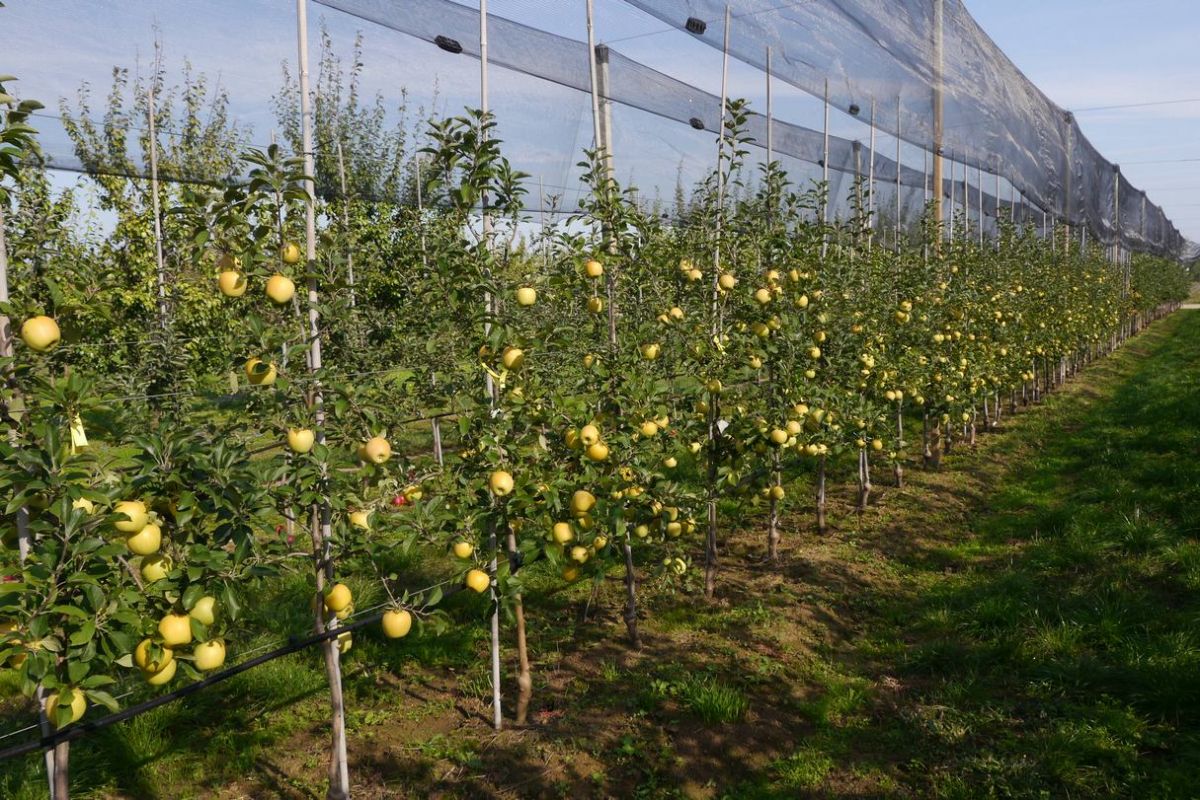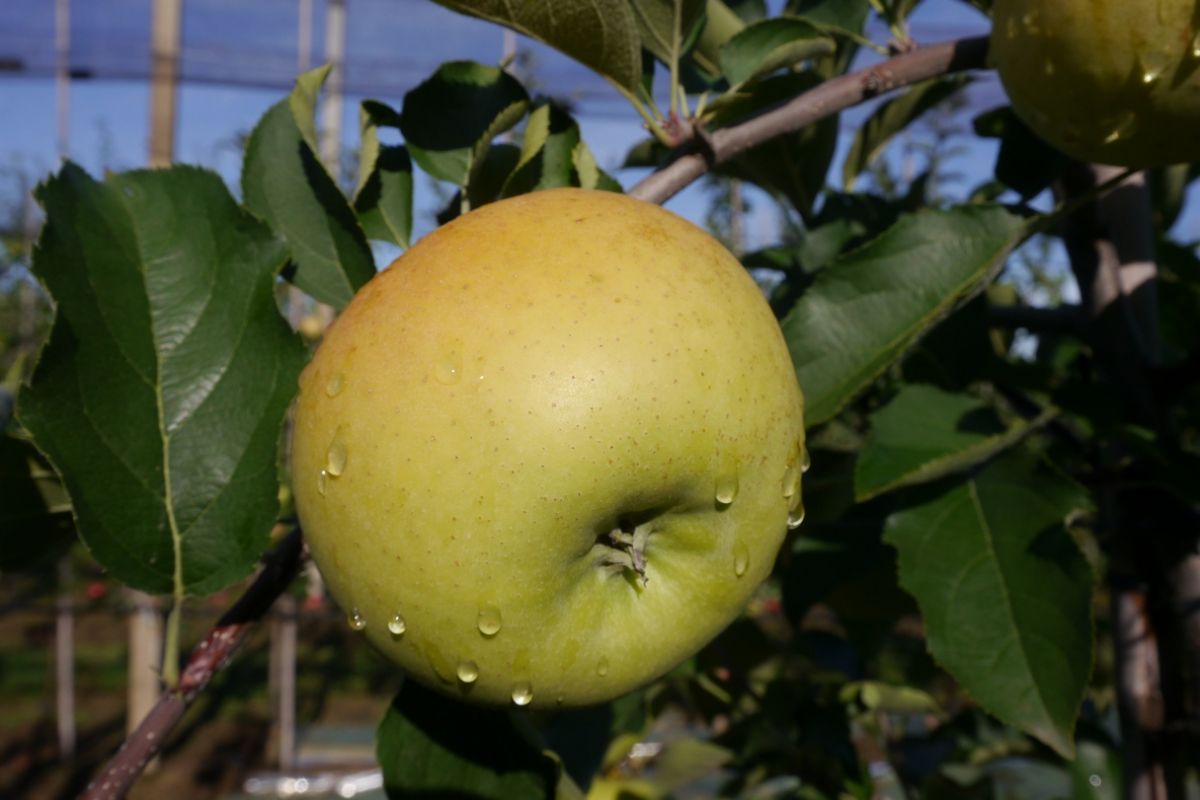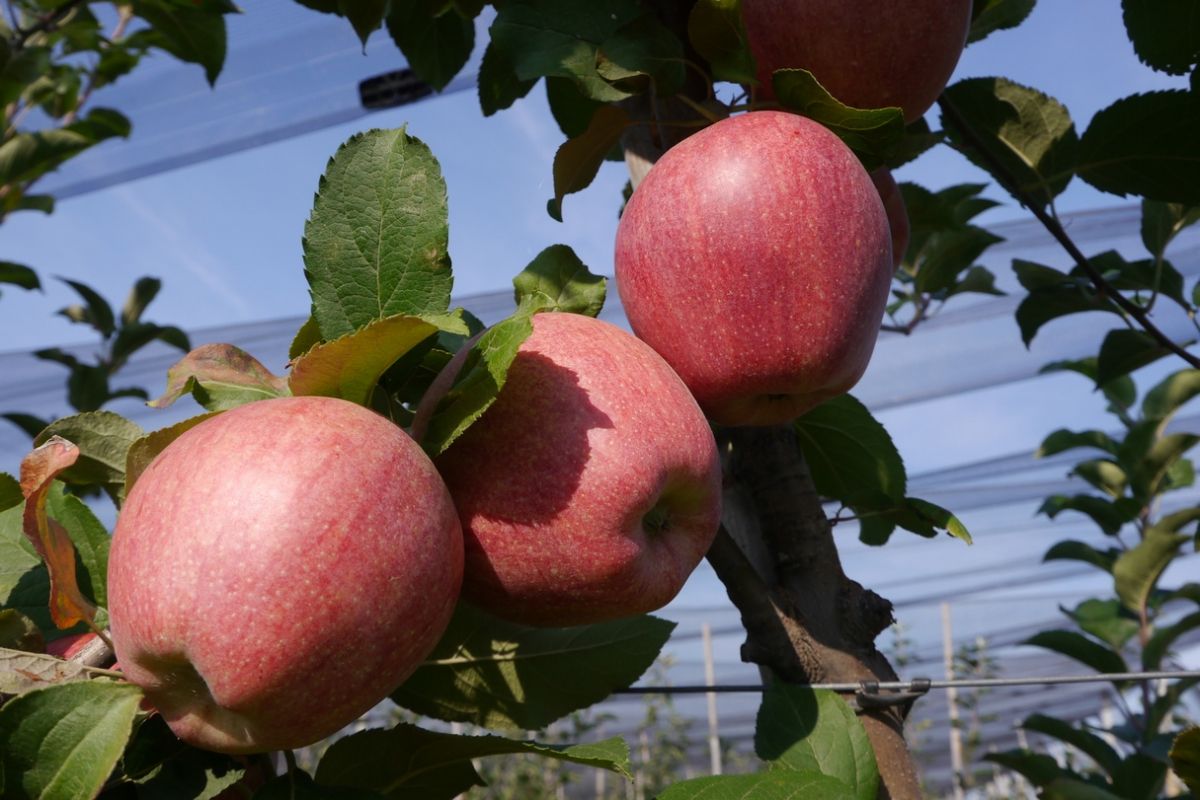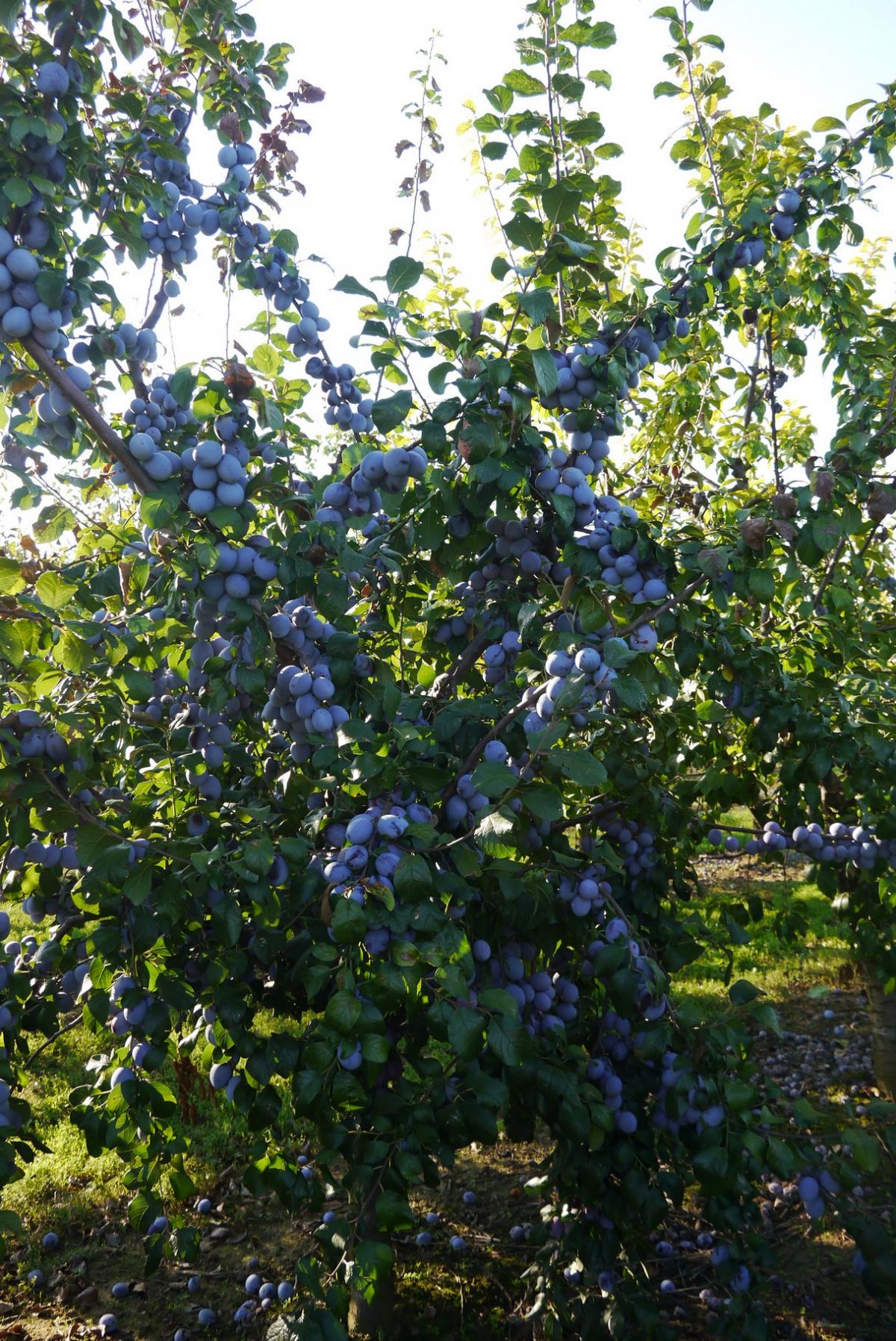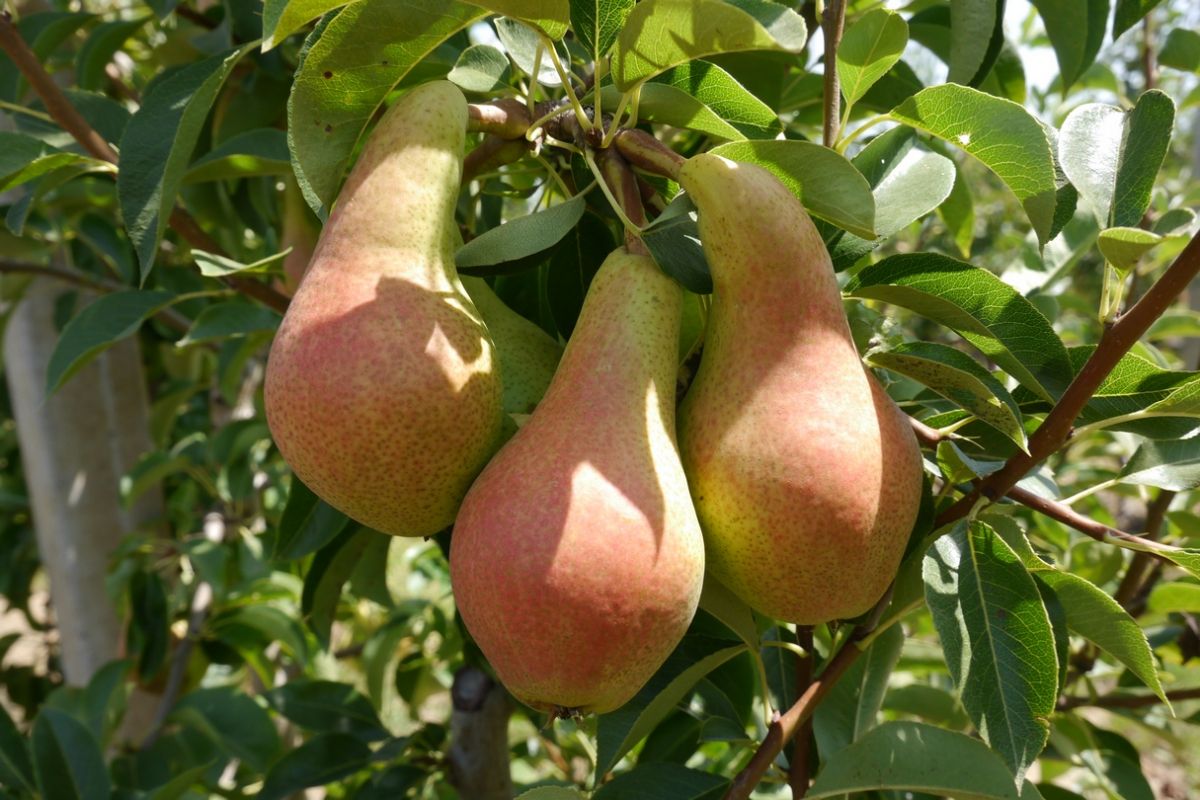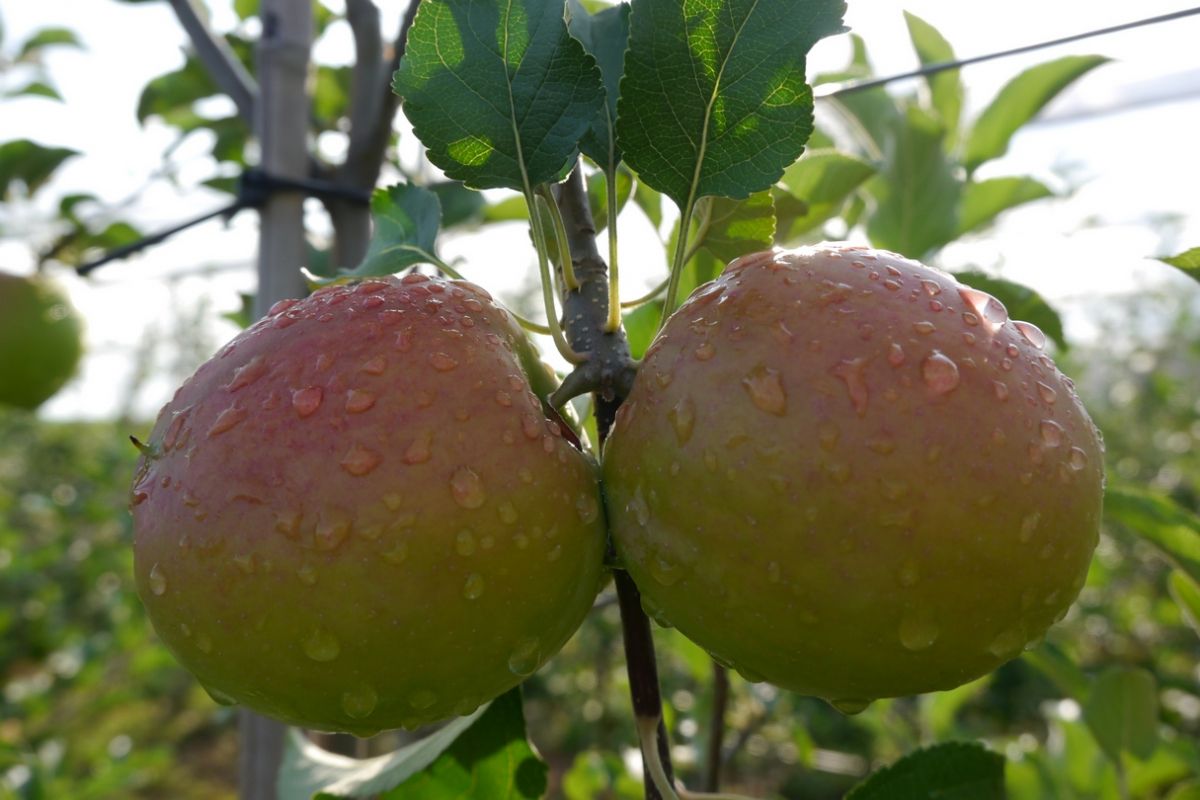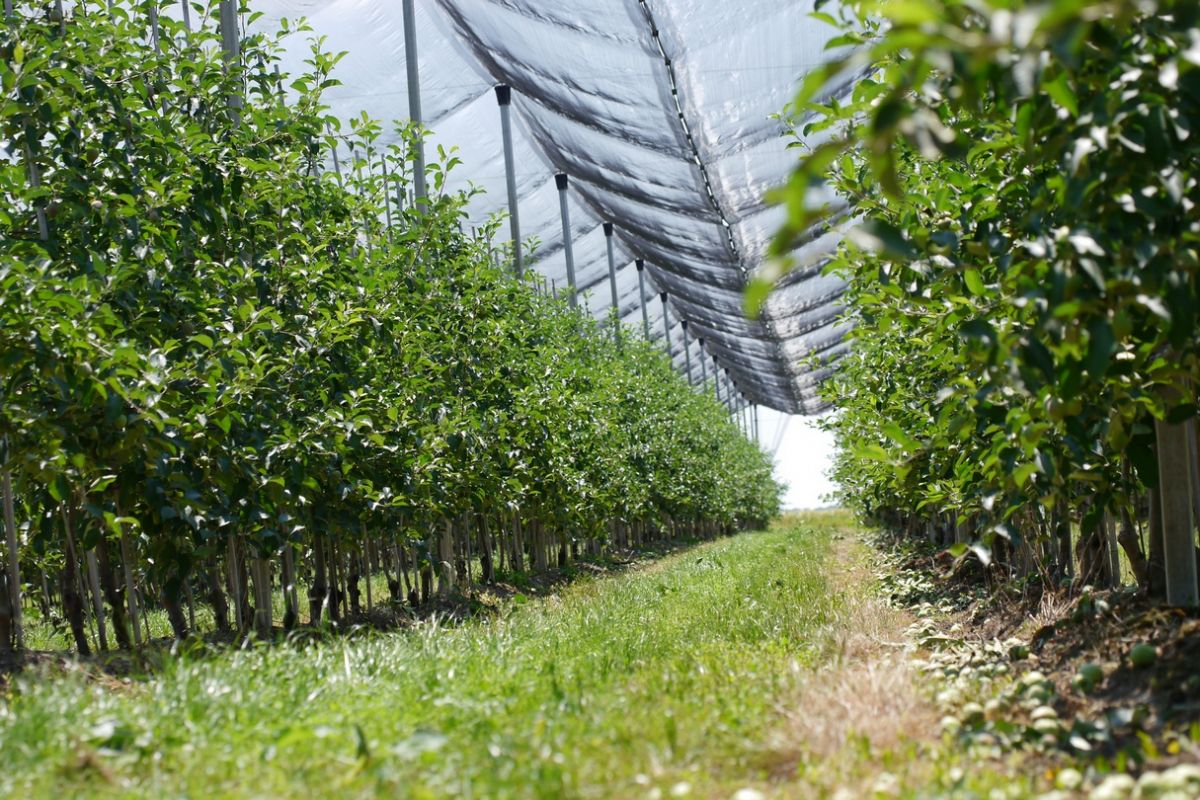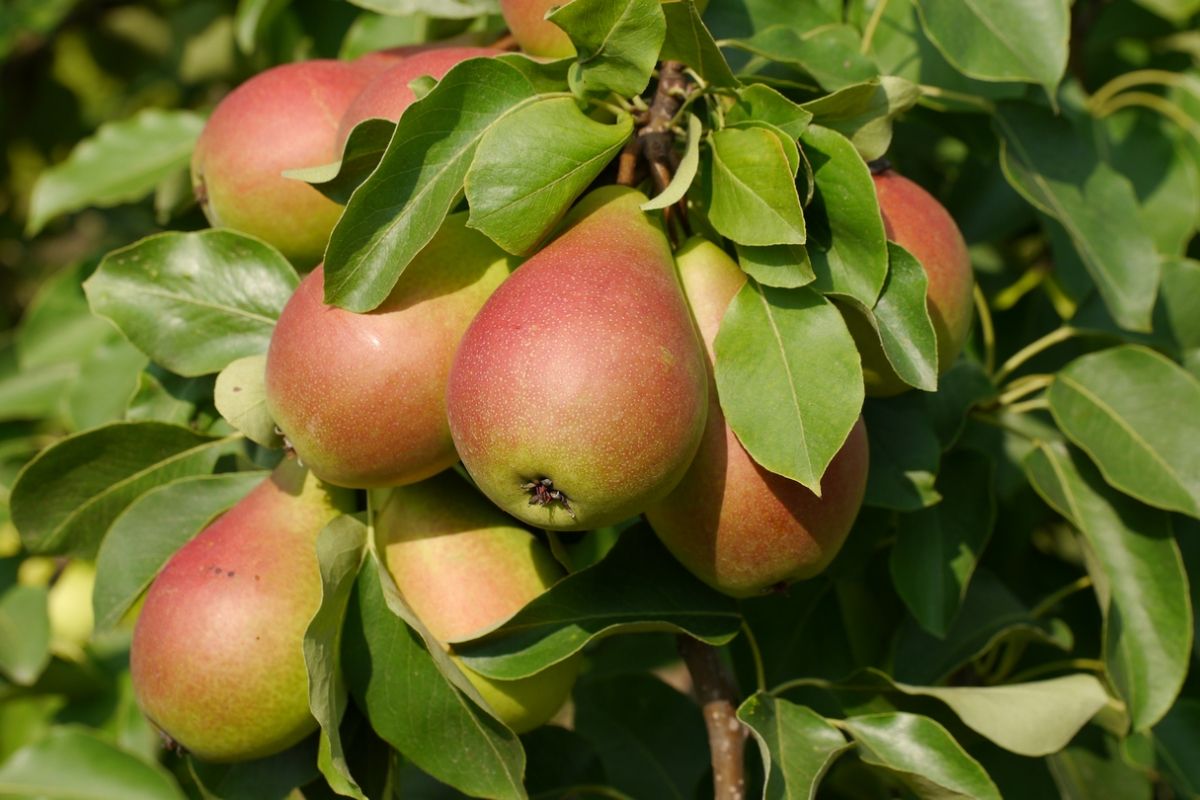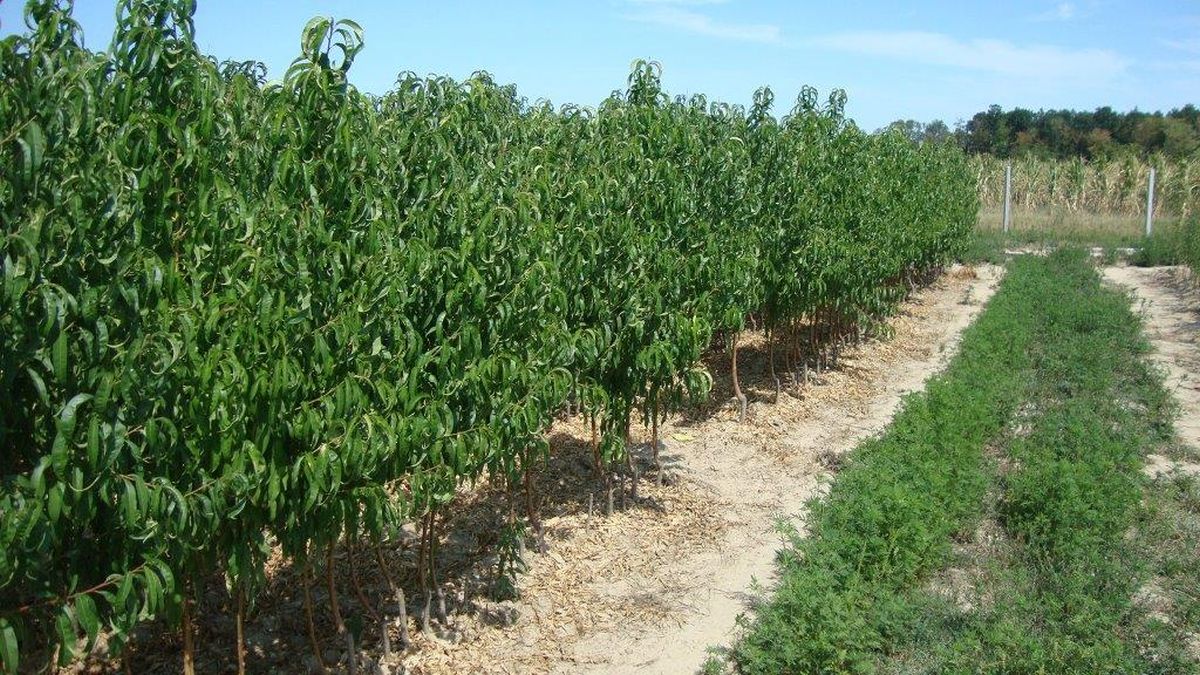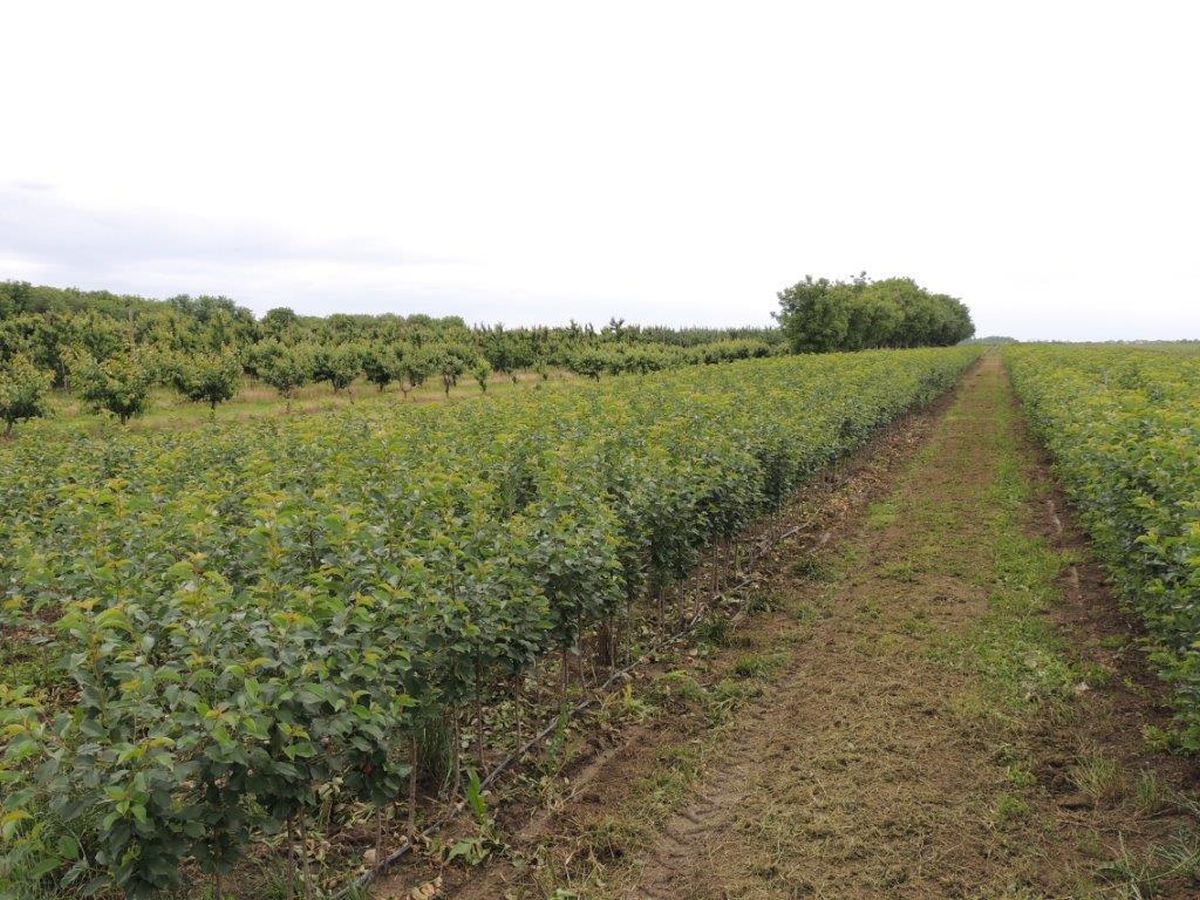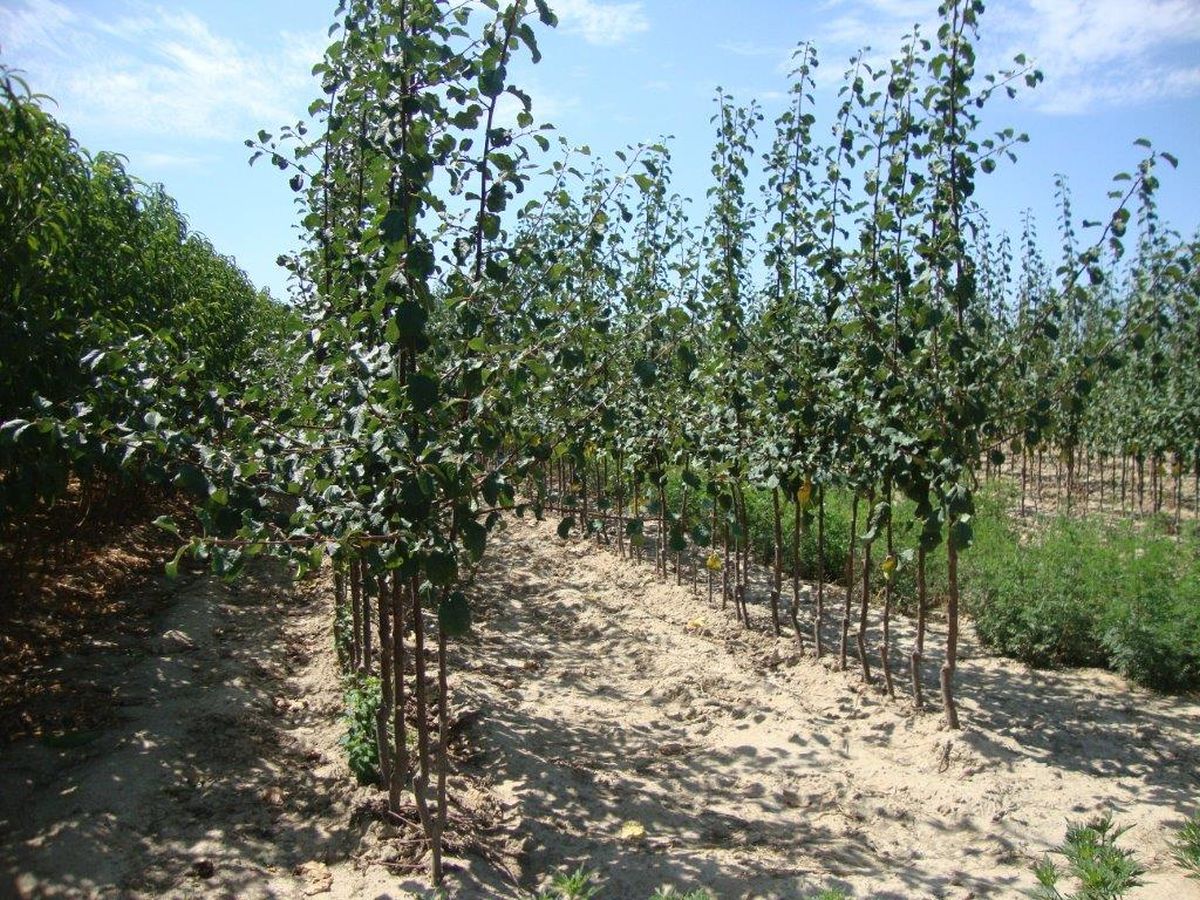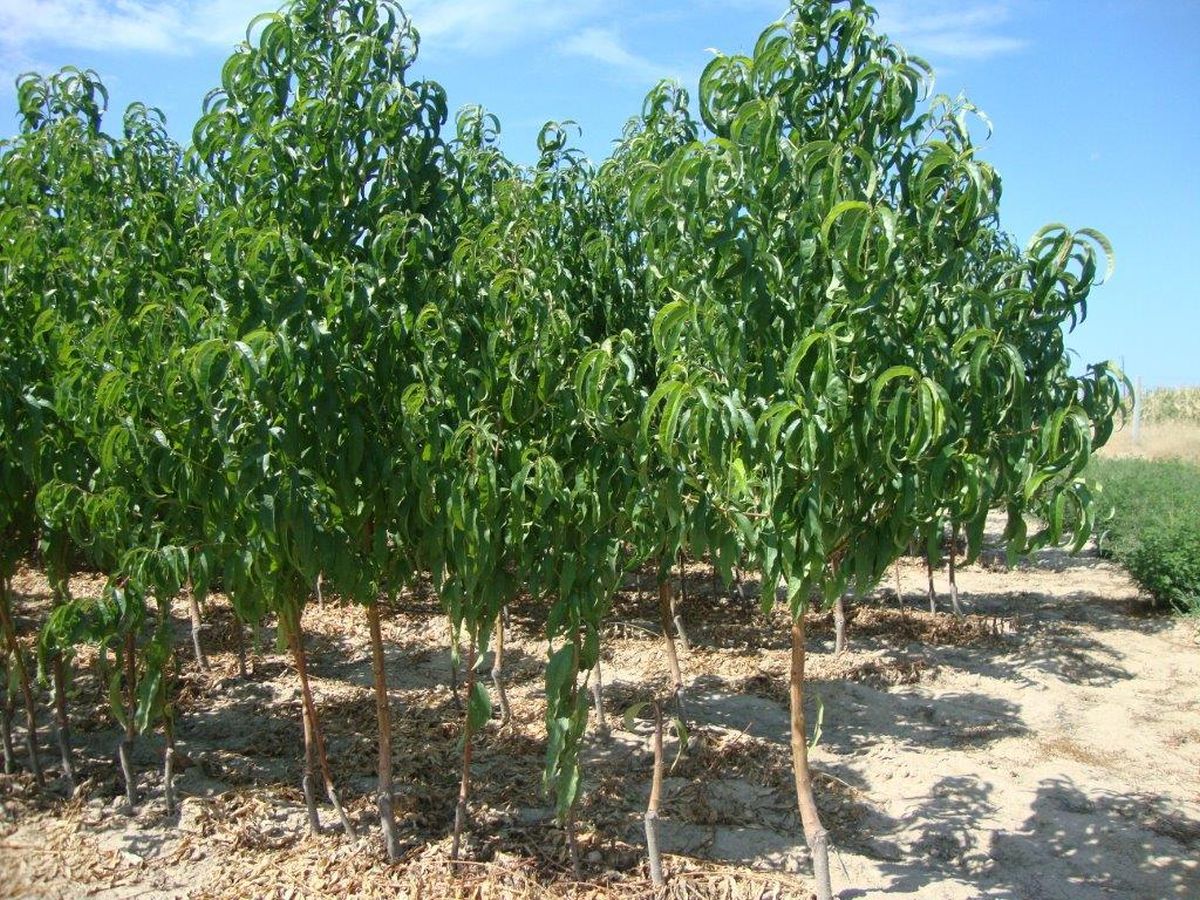Dear fruit and fruit tree nursery growers,
For the past few years, the Department of Pomology has focused on the development and introduction of planting material of cultivars that have shown the best results in the agroecological conditions of eastern Croatia. Each cultivar underwent years of extensive research before being selected for commercial production and recommended to producers, who make their decision in anticipation of top-quality fruit trees and high yields. Our primary focus is on producing stone fruits (plum, apricot, sour cherry, and cherry), and having a modern and competitive fruit assortment. With prior notice and reservation, we can also produce other types of fruit such as apple, pear, and quince.
The majority of today’s modern fruit cultivars are protected by licence rights, therefore when fruit trees are produced, the cultivar owner must be compensated. This fee is already factored into the cost of our fruit trees.
In this cultivar review, we will provide you with the opportunity to select high-quality planting material that will allow you to be competitive and recognisable on the market.
Your Agricultural Institute Osijek and Department of Pomology.
Plum
Čačanska ljepotica
Parents: Wangenheims Frühzwetsche x Bistrica.
Vigour: Moderate to low vigour and high yielding capacity.
Ripening period: End of July.
Fruit appearance: Medium-sized, 40 – 45 g on average.
Susceptibility to disease: Tolerant to Sharka disease, but susceptible to plum rust.
Other characteristics: It flowers early compared to other cultivars, and in some years, it produces double fruits. As less vigorous, it may be grown in intensive plantings. The petiole is short, the flesh is greenish-yellow, with sweet-subacid flavour. The stone is completely free.
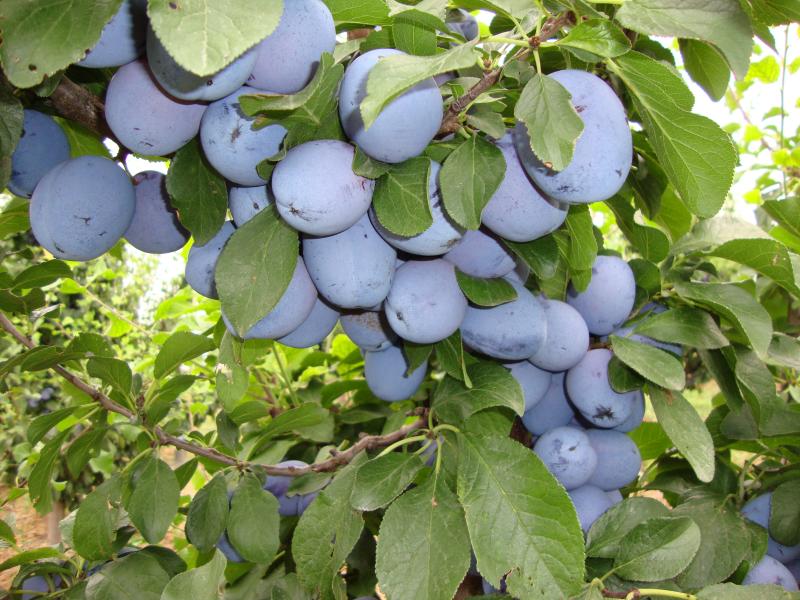
Čačanska rodna
Parents: Stanley x Bistrica.
Vigour: Moderate vigour, with a pyramidal crown / widely pyramidal crown under crop load.
Ripening period: Late August.
Fruit appearance: Very attractive, medium-sized, 35 – 45 g on average.
Susceptibility to disease: Moderately susceptible to Sharka disease; the fruits ripen earlier and drop; quite susceptible to red leaf spot and plum rust.
Other characteristics: High-quality plum cultivar, especially for processing. High yielding capacity, but prone to alternate bearing. It is self-fertile and requires intensive and proper pruning in order to bear fruit every year. It is very aromatic and flavourful, freestone, with total soluble solids of 16 – 18 % Brix, not suitable for intensive plantings. Disadvantage of this cultivar is fruit drop prior to harvest.
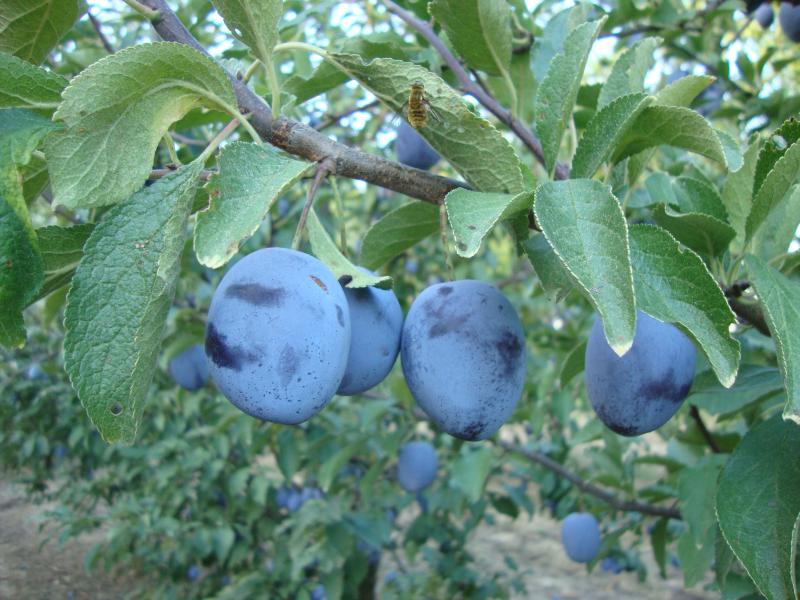
Elena
Parents: Fellenberg x Stanley.
Vigour: Moderate vigour.
Ripening period: Late September.
Fruit appearance: Medium-sized, slightly elongated.
Susceptibility to disease: Tolerant to Sharka disease. Susceptible to shot hole disease and plum rust.
Other characteristics: Suitable for both fresh consumption and processing due to very high sugar content. The stone is small and free, and the flesh is yellow. Very aromatic and flavourful, with firm flesh.
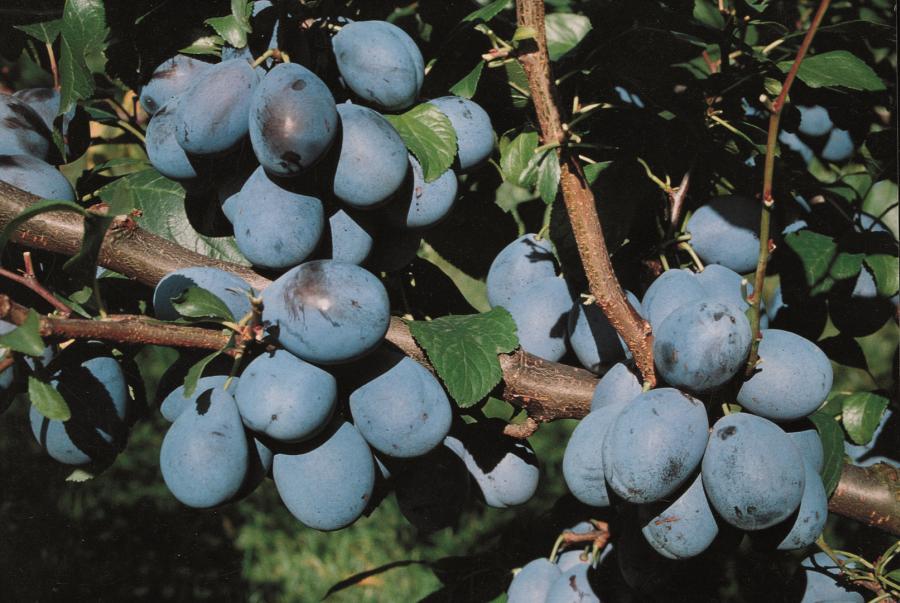
Haganta
Parents: Čačanska Najbolja x Valor.
Vigour: Moderate vigour, compact, with very good branch distribution. Easily maintained training shape. Branches are very strong in order to withstand fruit abundance and weight.
Ripening period: Late August, around the 20th of August.
Fruit appearance: Very attractive fruit, oblong-shaped, deep blue in colour, with heavy wax bloom, usually 50 – 80 g.
Susceptibility to disease: Susceptible to Sharka disease, the distinct symptoms of which appear on the fruit. The leaves are resistant to main fungal diseases.
Other characteristics: Haganta cultivar is a regular and heavy cropper. It is recommended that it be grown in Sharka-free areas (more than 500 m above sea level, e.g., Lika region). The leaves have good resistance to main fungal diseases. The fruit is very aromatic with bright yellow flesh. It has a long harvesting period of about 10-15 days without the loss of fruit firmness. Its main disadvantage is its susceptibility to Sharka disease.
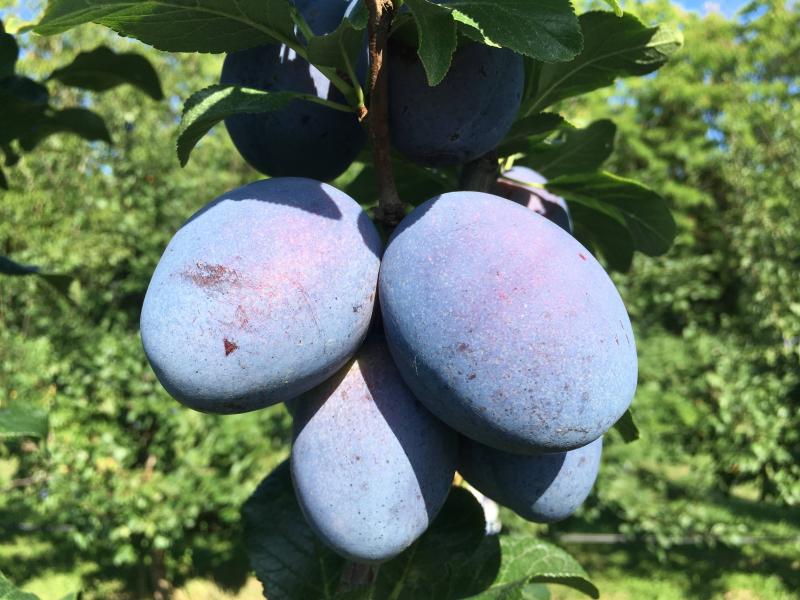
Juna
Parents: Katinka x Zwintschers Frühe.
Vigour: Moderate vigour, with upright branch growth.
Ripening period: Beginning of July.
Fruit appearance: Medium-sized, 35 – 45 g on average.
Susceptibility to disease: Tolerant to Sharka disease.
Other characteristics: At the moment, it is the best-quality plum cultivar in this ripening period, with moderately firm flesh and dark coloured fruit. It is self-fertile. It starts bearing fruit very early and is a regular cropper. Due to early ripening, it achieves a very good price on the market.
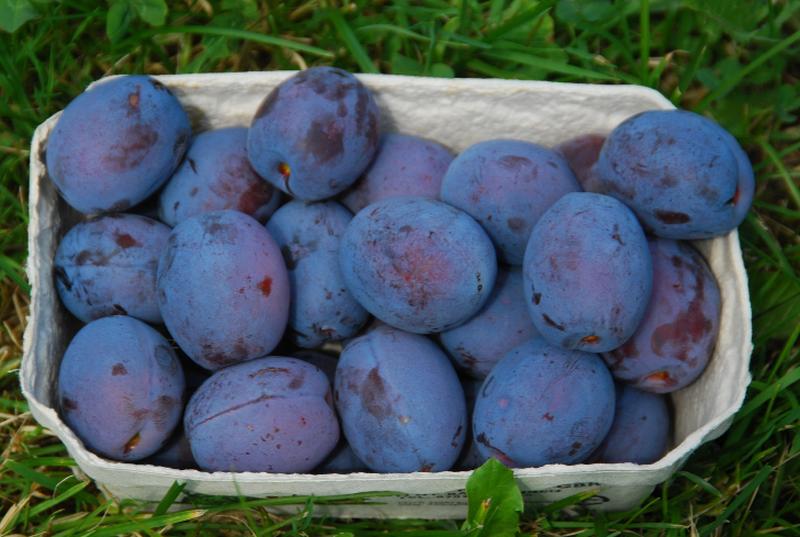
Katinka
Parents: Ortenauer x R. Gerstetter.
Vigour: Moderate vigour with a large branch angle and a robust, compact tree.
Ripening period: Mid-July.
Fruit appearance: Medium-sized, deep purple to blue in colour, elongated shape.
Susceptibility to disease: Tolerant to Sharka disease and fruit rot.
Other characteristics: Excellent aroma and quality, suited for both fresh consumption and processing. A regular and heavy cropper. Thinning is required in heavy cropping years. In the event of Sharka disease, symptoms appear only on the leaves. An early cultivar of excellent quality. The flesh falls away easily from the stone.
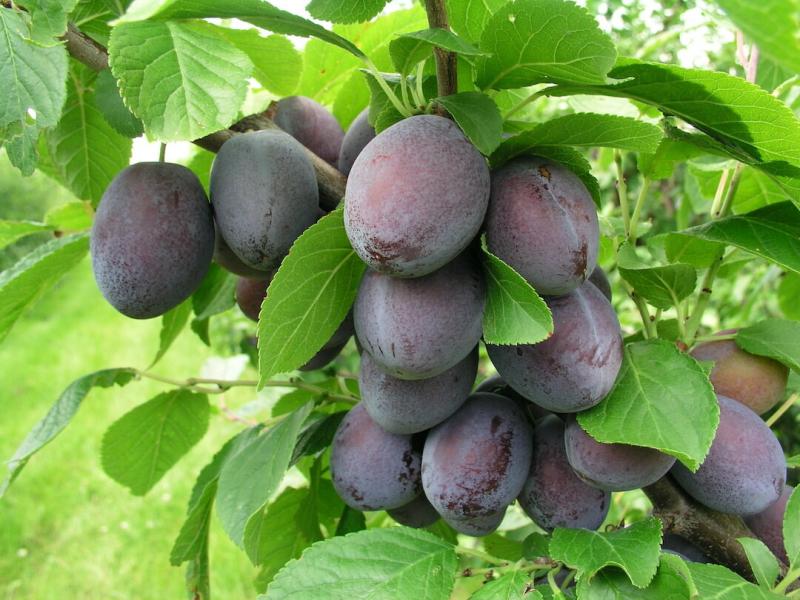
Prezenta
Parents: Ortenauer x President.
Vigour: Moderate vigour with upright branch growth.
Ripening period: Late September.
Fruit appearance: Medium-sized, with unusual “pear-shape” appearance.
Susceptibility to disease: Tolerant to Sharka disease.
Other characteristics: This cultivar is the last to arrive on the market. Suitable for both fresh consumption and processing due to very high sugar content. It can be kept in a cold storage for a long time, provided that treatments against fruit rot have been carried out. The stone is free. If produced as a dessert cultivar, it requires thinning.
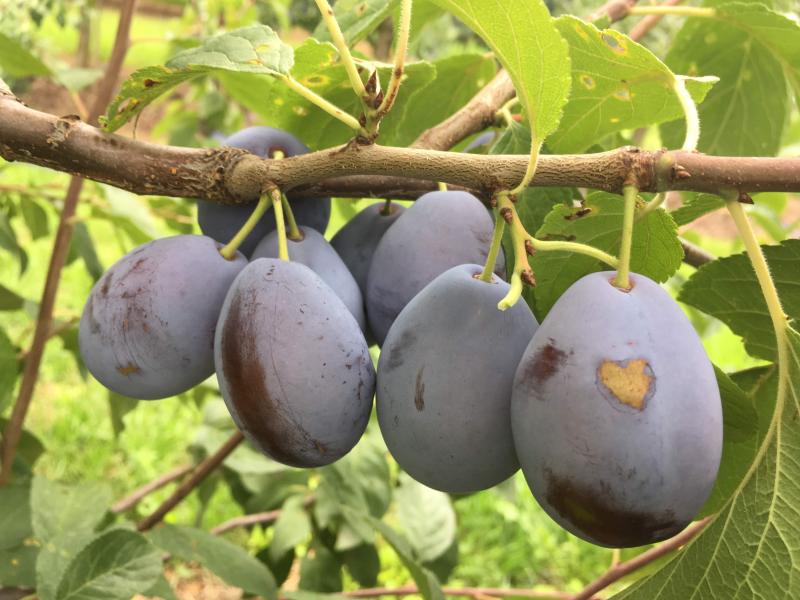
Top End Plus
Parents: Čačanska najbolja x Valor.
Vigour: Moderate vigour, compact, with semi-upright branch growth.
Ripening period: Mid-September.
Fruit appearance: Very attractive elongated fruit, blue with heavy wax bloom and very large, 60 – 70 g.
Susceptibility to disease: Tolerant to Sharka disease, not susceptible to fruit rot or plum rust. If infected with Sharka disease, its distinct symptoms appear only on the leaves.
Other characteristics: Partially self-fertile, pollinates well with TopHit. The fruit is very firm and able to withstand handling. Intensely blue wax bloom contributes to fruit attractiveness and appearance. A more attractive plum cultivar than TopHit in terms of fruit shape. High yielding capacity. It takes on blue colour very early, so it is important that the fruits are harvested at optimal maturity. It is characterized by very long harvesting period. The fruits remain on the tree throughout September and do not tend to fall. The flesh of the fruit is firm, yellow, and sweet. Suited for longer cold storage.
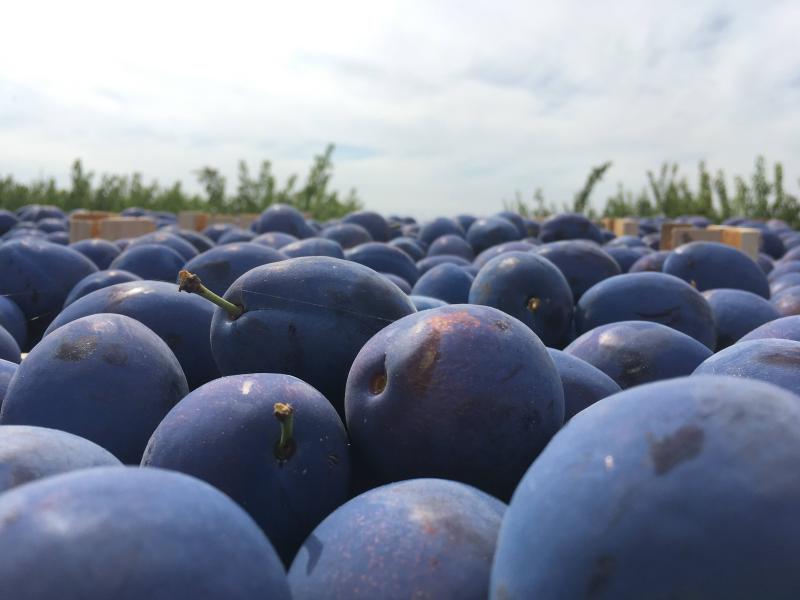
Top Hit
Parents: Čačanska najbolja x President.
Vigour: Vigorous and compact. Suitable for any training shape and any planting density.
Ripening period: Early September.
Fruit appearance: Very attractive fruit – blue with heavy wax bloom. The fruit is very large, 60 – 80 g, more rounded than elongated in shape.
Susceptibility to disease: Tolerant to Sharka disease, and not susceptible to fruit rot or plum rust.
Other characteristics: A cultivar with high yielding capacity that requires pruning. If the yield is too abundant, it tends to bear alternately. It fruits in its second leaf, and with full application of agro-technical and pomo-technical practices, it is a regular and heavy cropper. If there is excess flowering, flower thinning is recommended. The flesh falls away easily from the stone. As with most plum cultivars, when harvested earlier, it has pronounced acidity. It has a long harvesting period of about 15 days without significant loss of fruit firmness. It is self-fertile, but achieves higher yield with Čačanska Ljepotica, Haganta, and Presenta as pollinators.
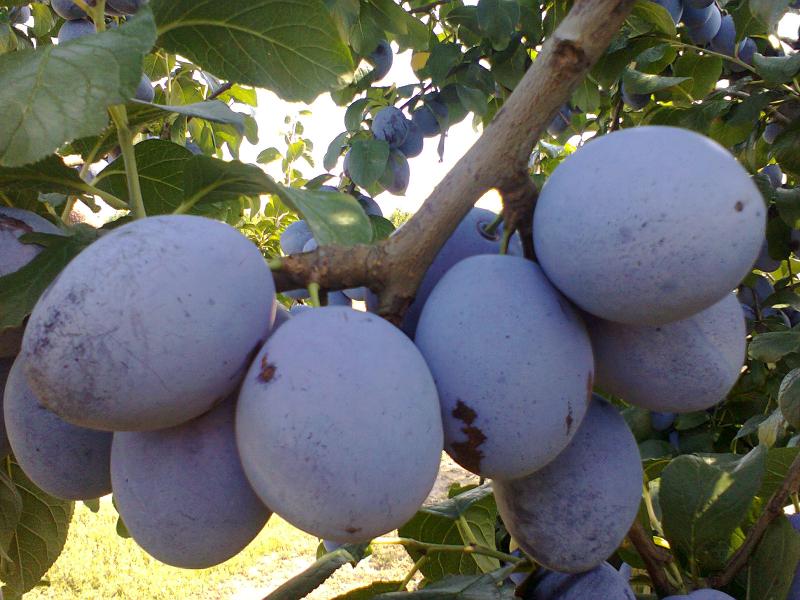
Top Taste
Vigour: Moderate to high vigour, with a very large branch angle.
Ripening period: Beginning of August for fresh consumption, end of August for processing.
Fruit appearance: Medium-sized, approximately 45 g, depending on crop load.
Susceptibility to disease: Tolerant to Sharka disease. In the event of Sharka disease, symptoms appear only on the leaves. Moderately susceptible to brown rot.
Other characteristics: Highly-yielding cultivar, with intensely sweet, pleasantly aromatic fruit. It has high shoot-forming capacity and is very easily trained into a desired shape. It flowers moderately early, at about the same time as Čačanska Ljepotica. A self-fertile cultivar, it has a very long harvesting period of about 15-20 days and loses very little fruit firmness during ripening. The disadvantage of this cultivar is that the flesh does not fully come away from the stone. During longer storage periods or later harvest periods, there are micro cracks noticeable in the area around the petiole, which can lead to pathogen outbreak. It starts bearing fruit in its second year and is a regular and heavy cropper. Its sugar content is high – a Brix of over 20%, so it is well suited for brandy production.
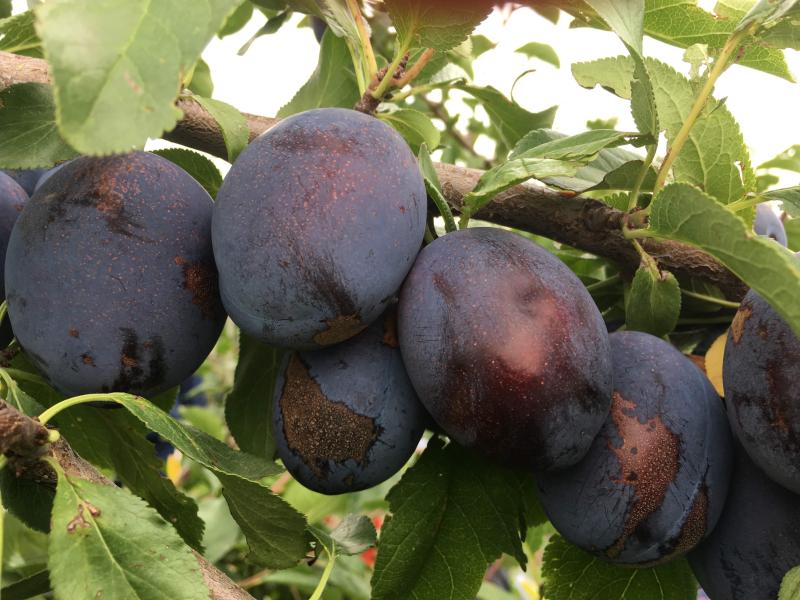
Cherry
Burlat
Vigour: The tree is vigorous, with upright growth. The fruit is mainly produced on short spurs.
Ripening period: 0 (this cultivar is taken as the standard in terms of ripening period). In Slavonia, it ripens around the 20th of May.
Pollination: This cultivar is self-sterile and requires pollinators such as Van, Stella, Lapins, and Starking Hardy Giant.
Fruit: Fruit is medium-sized and weighs on average 7 g. The flesh is red and moderately firm.
Other characteristics: Burlat is an old, widely produced French cultivar. It is a very good cultivar that requires pollinators and is itself a good pollinator to other cultivars.
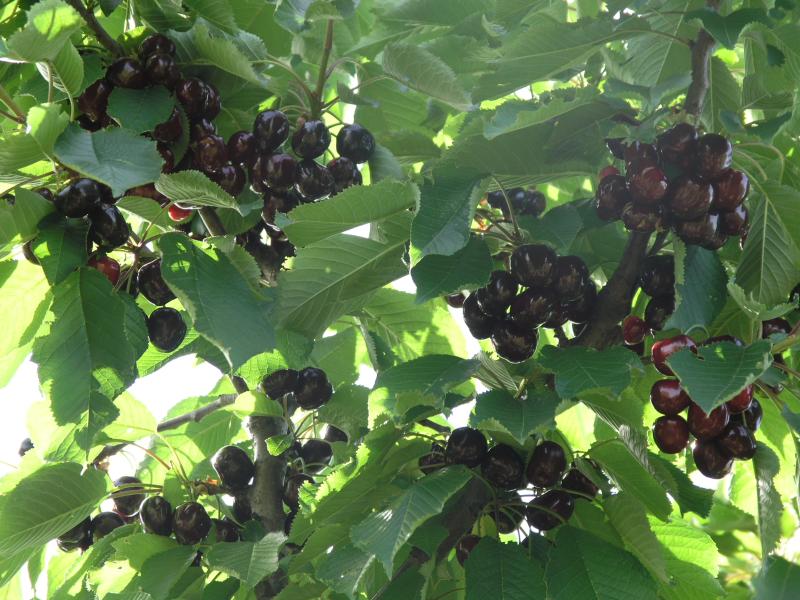
Carmen
Vigour: The tree is vigorous with a dense crown.
Ripening period: +7 in relation to Burlat.
Pollination: Self-fertile cultivar that flowers late. It pollinates well with Germesdorfer.
Fruit: Fruit is large in size, averaging 10-11 g. It is round-shaped, with red skin and flesh. The fruit has a pleasant aroma and a sweet and somewhat acidic taste.
Other characteristics: Yield is consistent and high. It starts bearing fruit very early, especially on weaker rootstocks. The cultivar is interesting because of early ripening period, large fruit and high yielding capacity.
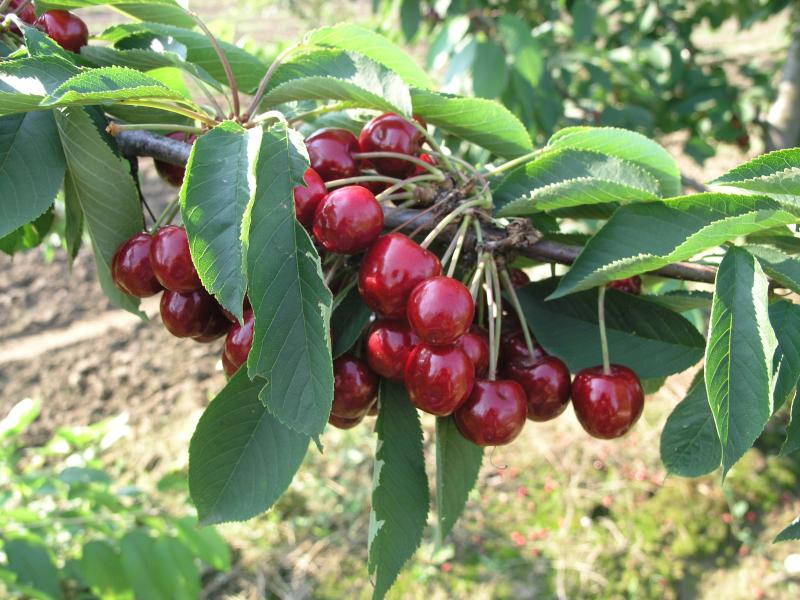
Kordia
Vigour: The tree is robust and moderately vigorous with a well branched crown.
Ripening period: + 24
Pollination: This cultivar is self-sterile and pollinates well with Burlat, Van, and Regina.
Fruit: Medium-sized, 8 – 9 g on average. The fruit is cordate-shaped and deep red, with a long stem. The flesh is firm and of optimal quality. The fruit consistently reaches peak ripeness on the tree. It is semi-susceptible to fruit rot.
Other characteristics: The fruit is mainly produced on short spurs. It starts bearing fruit moderately early. The yield is moderate and not regular. It is a high-quality cultivar that ripens late and gives attractive fruit.
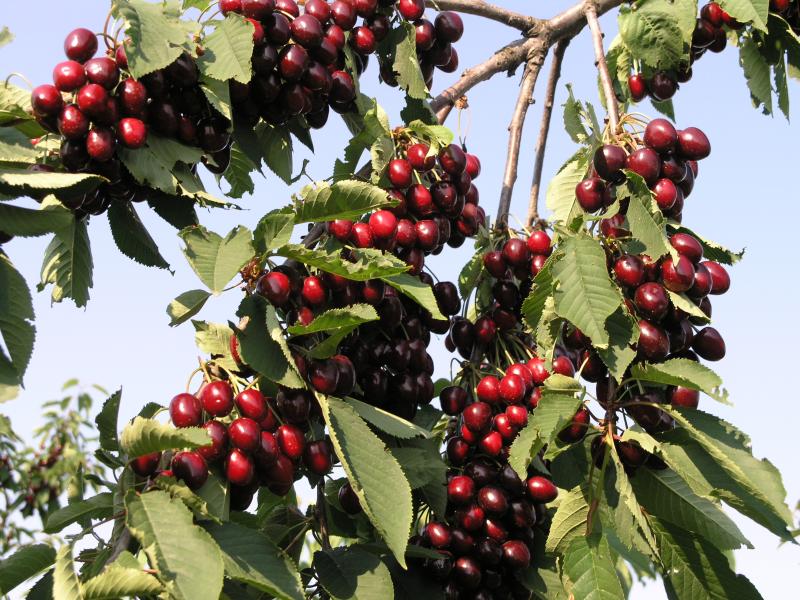
New Star
Vigour: The tree is moderately vigorous with a wide and open crown.
Ripening period: + 15
Pollination: It is self-fertile and starts bearing fruit early. The flowering starts late.
Fruit: The fruit is large, 9-11 g on average. The skin is red to deep red. The flesh is semi-firm and juicy, with a pleasant aroma. The stone is free.
Other characteristics: This cultivar is characterized by abundant and consistent yield every year. It is a good pollinator to other cultivars that flower in the same period.
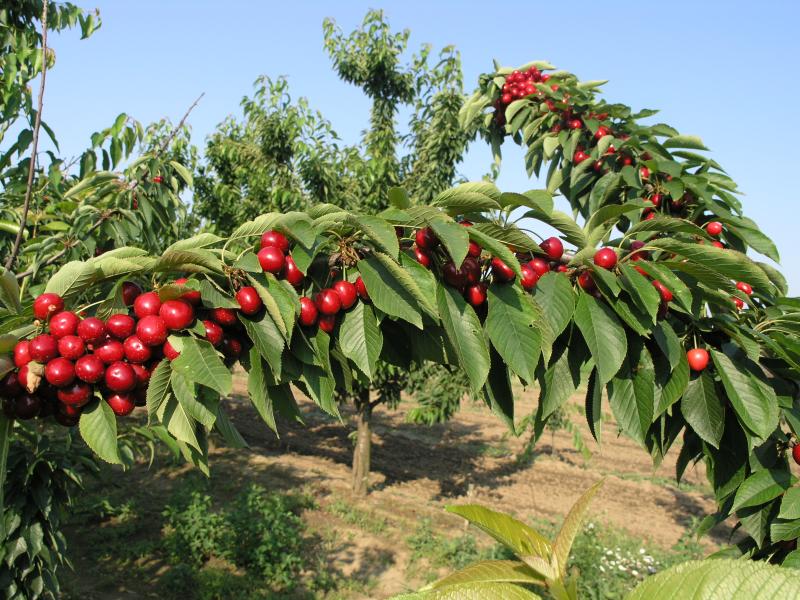
Regina
Vigour: The tree is vigorous with a well branched crown.
Ripening period: + 30
Pollination: This cultivar is self-sterile and pollinates well with Burlat, Van, Kordia, and Sylvia.
Fruit: The fruit is cordate-shaped and medium-sized, 8-9 g on average. Skin colour is red, and the flesh is of good quality. It is semi-susceptible to fruit rot. Fruit is mainly produced on short spurs.
Other characteristics: It is a high-quality cultivar that ripens late, with excellent-quality fruit.

Stark Hardy Giant
Vigour: The tree is vigorous and upright-growing with a wide crown.
Ripening period: + 20
Pollination: Self-sterile. It pollinates well with Burlat, Van, and Hedelfinger.
Fruit: The fruit is medium-sized, 7 g on average. It has a blunt cordate shape and its colour is deep red.
Other characteristics: This cultivar is extremely sensitive to drought, especially in the summer, and needs to be irrigated. It is more suitable for southern regions and Dalmatia due to its sensitivity to plant diseases.
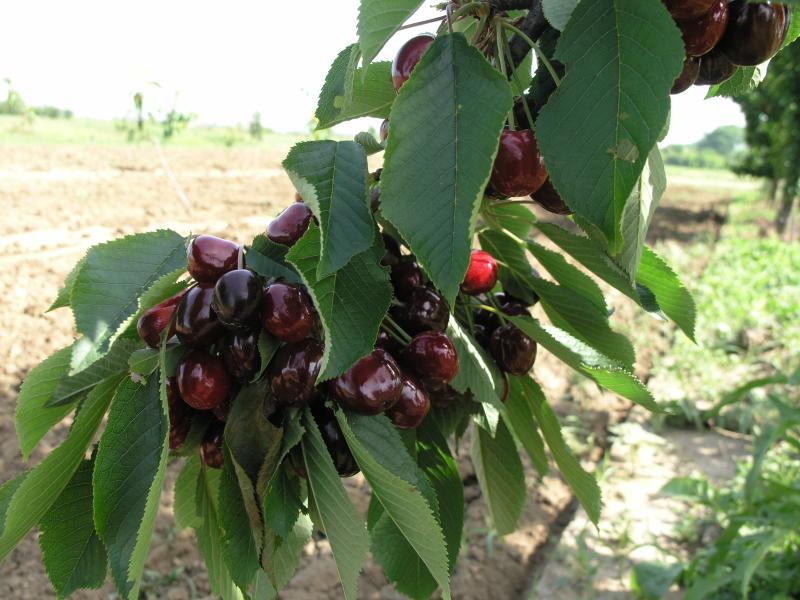
Stella
Vigour: The tree is moderately vigorous to vigorous, with a large upright crown.
Ripening period: + 21
Pollination: Self-fertile.
Fruit: The fruit is medium-sized, 8 g on average. It is cordate-shaped and deep red in colour. The flesh is deep red, firm, and crispy, with a very pleasant aroma.
Other characteristics: Stella is a good pollinator to other varieties that flower in the same period. It starts bearing fruit early and gives abundant yield every year.
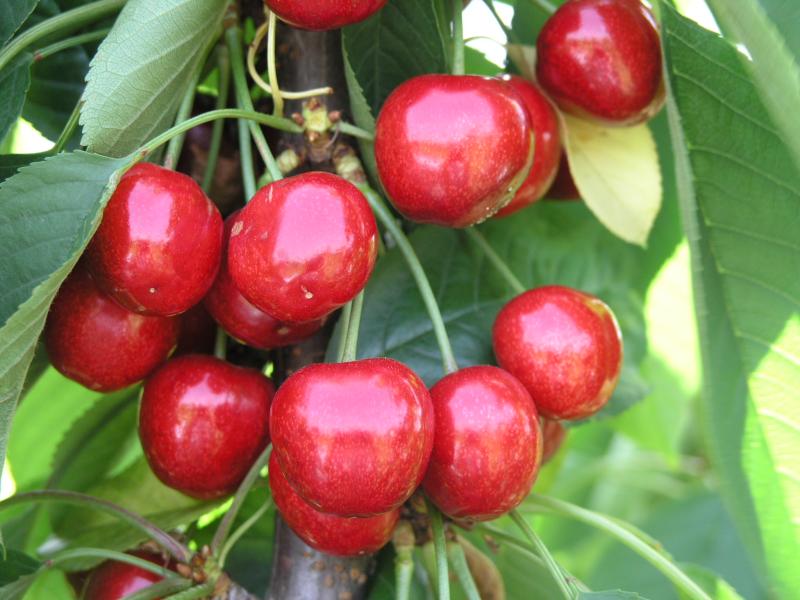
Sunburst
Vigour: The tree is moderately vigorous to vigorous, with a wide crown.
Ripening period: + 19
Pollination: Self-fertile.
Fruit: The fruit is large, 11 g on average. It is round-shaped and deep red in colour. The flesh is red and firm, with a very pleasant aroma.
Other characteristics: This cultivar is interesting for many qualities, especially the size and quality of the fruit. On average, it has a Brix of 16 %. It flowers moderately early.
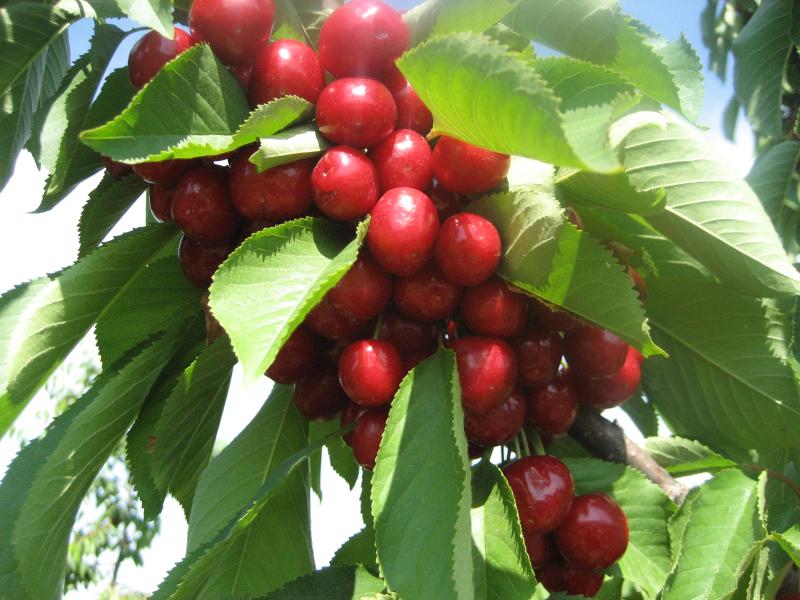
Sour cherry
Oblačinska
Vigour: The tree is of low vigour, compact, with good branch distribution.
Ripening period: Mid-June.
Fertility: Self-fertile.
Fruit: The fruit is small, averaging 3,5 g. It is round and deep red. The flesh and juice are also deep red.
Other characteristics: Oblačinska is the most sought-after, high-quality sour cherry cultivar. It flowers late and it is tolerant to frost.
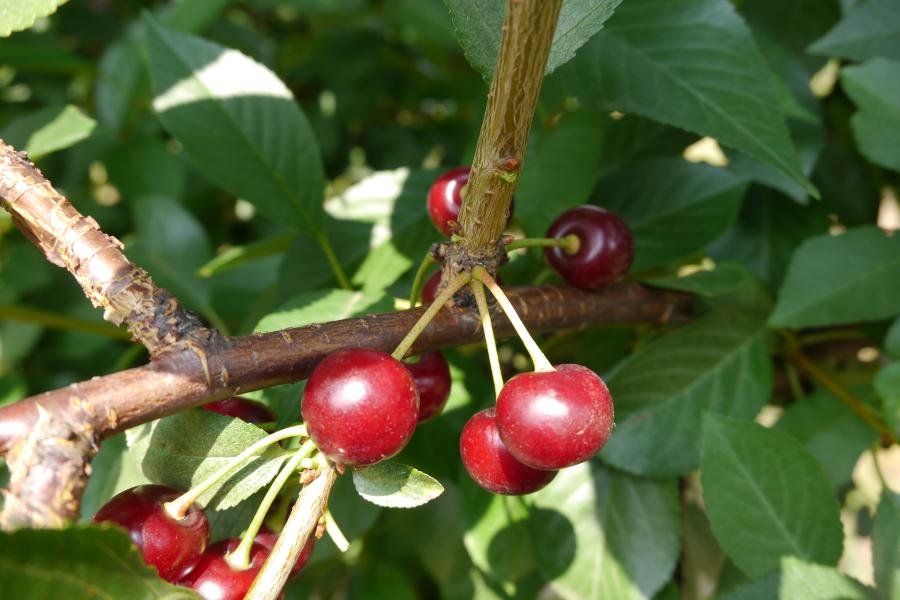
Apricot
Bergeron
Parents: Originates from France, found as a chance seedling.
Tree: Moderately vigorous, robust and compact, with a pyramidal crown. The fruit is produced mainly on mixed spurs.
Ripening period: It ripens in mid-July, 7 to 10 days after the Hungarian Best.
Fruit: The fruit is medium-sized, 45-50 g on average. Self-fertile. Fruit thinning is required in heavy cropping years. It is oblong in shape. The skin develops red blush on the sunny side. The flesh is moderately firm, juicy, with sweet and sub acidic flavour. It contains soluble solids concentration of about 16%.
Susceptibility to disease: Susceptible to Sharka disease.
Other characteristics: The cultivar is suitable for both fresh consumption and processing. It is a heavy cropper. High temperature may cause sunburns and shrivelling of the fruit.
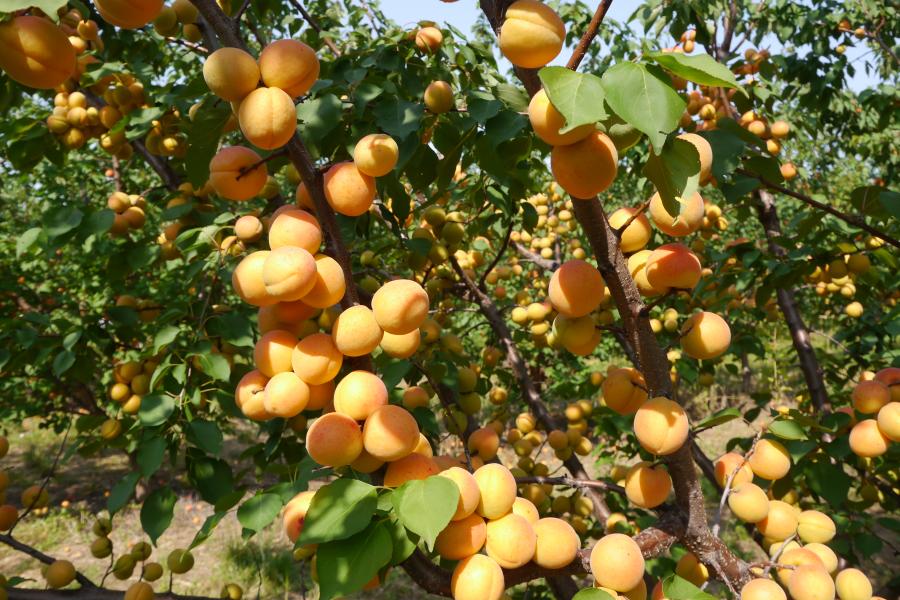
Gencika
Parents: Created by clonal selection in Hungarian Best.
Tree: Moderately vigorous with a wide crown. It is particularly good at coping with winter temperatures.
Ripening period: Early July.
Fruit: The fruit is medium-sized, with average mass ranging between 45 and 50 g. It is round to cordate in shape. The skin is orange, blushed with red on the sunny side. The fruit is very flavourful and aromatic, suitable for all types of processing.
Susceptibility to disease: Susceptible to Sharka and shot hole disease.
Other characteristics: A self-fertile cultivar with a relatively short flowering period. A heavy cropper. The kernel is sweet. Suitable for all types of processing. It is characterized by an even better aroma and deeper colours than are found in the Hungarian Best.
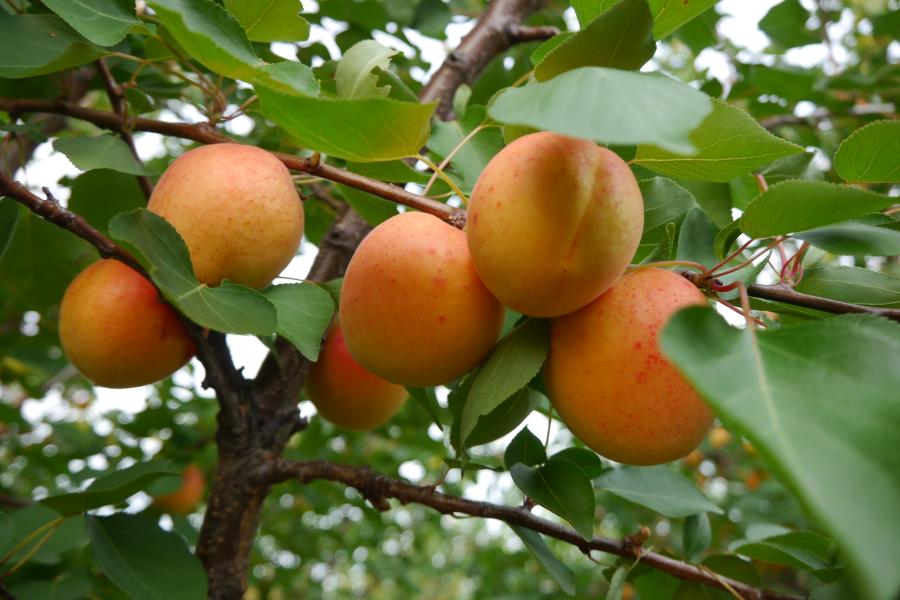
Hungarian Best
Parents: Old Hungarian cultivar, parents unknown.
Tree: Moderately vigorous with a wide crown. It is particularly good at coping with winter temperatures.
Ripening period: Early July.
Fruit: The fruit is medium-sized, 45 g on average. It is round to cordate in shape. The skin is orange, blushed with red on the sunny side. The fruit is very flavourful and aromatic, suitable for all types of processing. It is not transportable.
Susceptibility to disease: Susceptible to Sharka and shot hole disease.
Other characteristics: A self-fertile cultivar with a relatively short flowering period. A moderate cropper. The kernel is sweet.
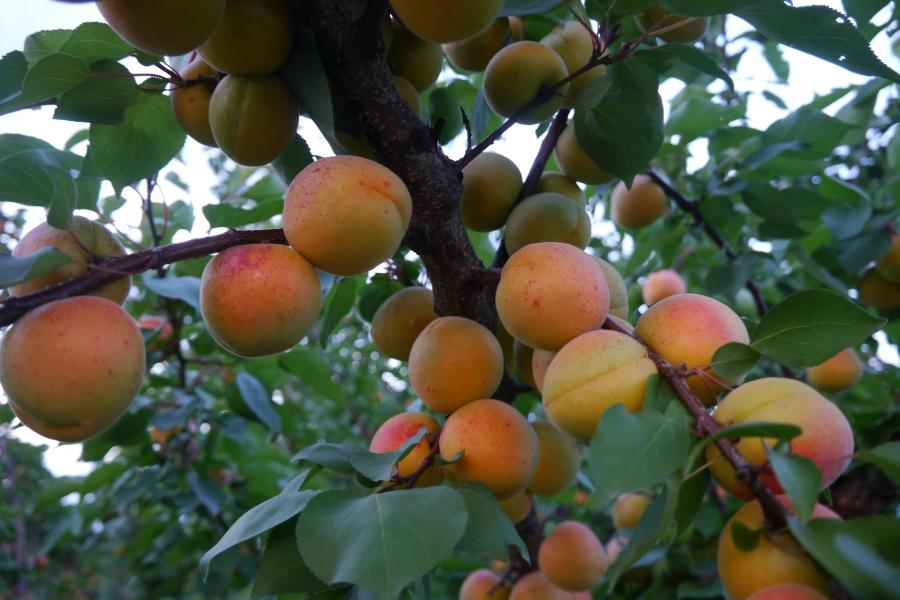
Kuresia
Parents: Created by selection from an unknown variety in Germany.
Tree: The tree is moderately vigorous, robust and compact.
Ripening period: It ripens 4 – 5 days before the Hungarian Best, on average around the 5th of July.
Fruit: The fruit is medium-sized, 45-50 g on average. Self-fertile. Fruit thinning is required in heavy cropping years. Round in shape with very firm flesh. The fruit is transportable. The skin is blushed red on the sunny side. The flesh is intensely aromatic and fragrant. The stone is small and easily comes away from the flesh. The fruit has a good sugar – acid ratio.
Susceptibility to disease: Tolerant to Sharka disease.
Other characteristics: It is a regular cropper that flowers in the approximately same period as the Hungarian Best. Very attractive, medium-sized fruit. Suited for areas affected by Sharka disease.
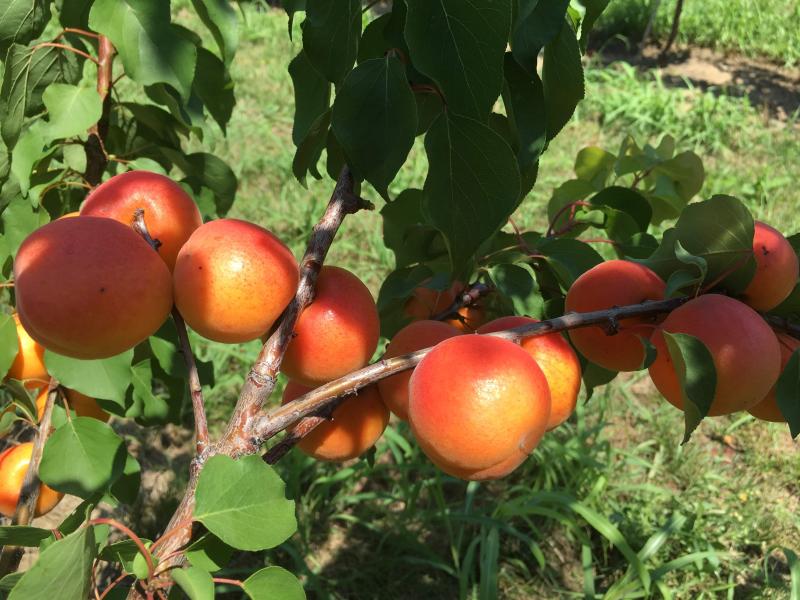
NS-4
Parents: Created by selection from natural population.
Tree: Vigorous with a wide crown and very firm branches. It is particularly good at coping with winter cold.
Ripening period: Early July, four days after the Hungarian Best.
Fruit: The fruit is large, with average mass of 65 g, oblong in shape. The skin is orange, blushed with intensive red over 30-60% of the fruit surface. The fruit is very attractive.
Susceptibility to disease: Susceptible to Sharka disease.
Other characteristics: A regular but moderate cropper. Characterized by a very long flowering period which can be prolonged for two to three days by pruning. The fruit is suitable for fresh consumption and processing. The kernel is sweet. The flesh is moderately firm and very aromatic.
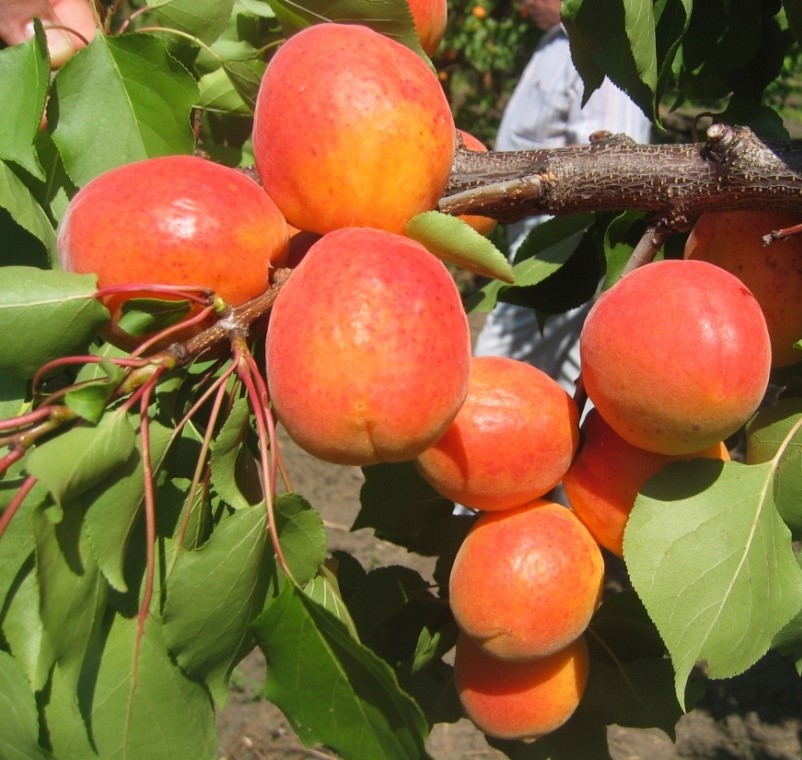
NS-6
Parents: Created by selection from natural population.
Tree: Vigorous with a wide crown and very firm branches. It is particularly good at coping with winter cold.
Ripening period: Early July, four days after the Hungarian Best.
Fruit: The fruit is large, with average mass of 65 g, oblong in shape. The skin is orange, blushed with intensive red over 30-60% of the fruit surface. The fruit is very attractive.
Susceptibility to disease: Susceptible to Sharka disease.
Other characteristics: A regular but moderate cropper. Characterized by a very long flowering period which can be prolonged for two to three days by pruning. The fruit is suitable for fresh consumption and processing. The kernel is sweet. The flesh is moderately firm and very aromatic.
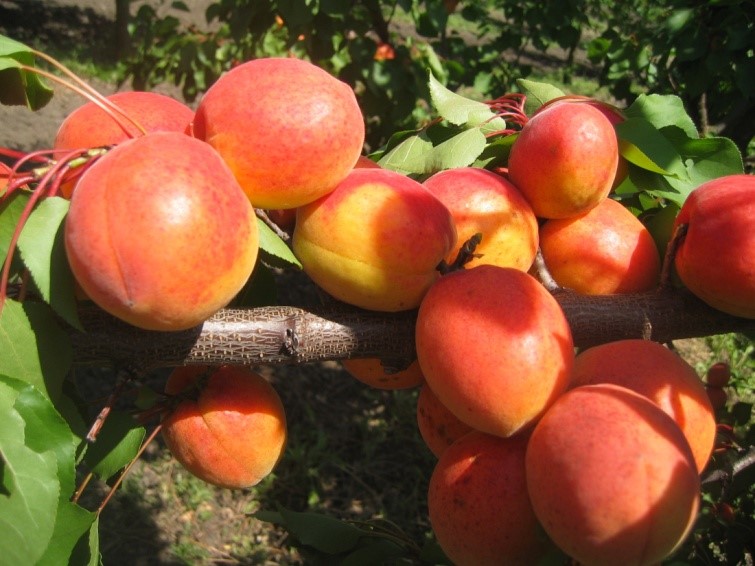
NS-rodna
Parents: Created by selection from natural population.
Tree: The tree is moderately vigorous, with a round to widely round crown. The fruit is mainly produced on mixed spurs. The branches are strong. Its yielding capacity is very high. When the crop is heavy, the branches tend to break, which is why the yield needs to be controlled by pruning. It flowers late, 2 – 4 days after the Hungarian Best.
Ripening period: It ripens 4 – 5 days after the Hungarian Best.
Fruit: The fruit is large, 70 g on average. It is oblong and little flat on the side. The skin is light orange, blushed with red over 25 – 35% of the fruit surface. The flesh is orange, aromatic, of very pleasant taste, and it comes away from the stone easily.
Susceptibility to disease: Susceptible to Sharka disease.
Other characteristics: A regular and heavy cropper. Characterized by very long flowering period which can be prolonged for 2 – 3 days by pruning. The fruit is intended for fresh consumption and processing. The kernel is sweet.
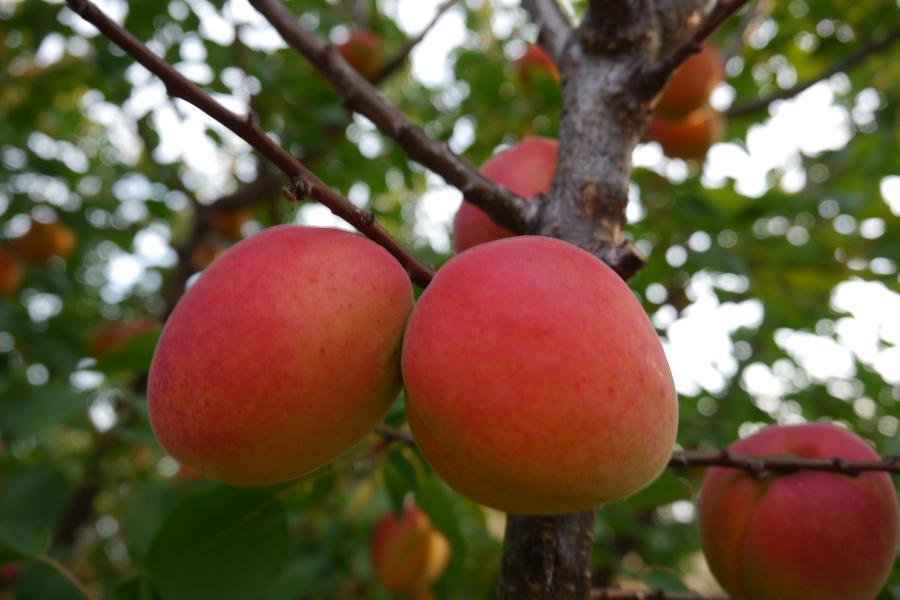
Sungiant (Goldrich)
Parents: Sun Glo x Perfection.
Tree: Vigorous and compact. Fruit is produced mainly on spurs and short fruiting shoots.
Ripening period: End of June.
Fruit: The fruit is large (65 g on average) and oblong in shape. The skin is orange, with no blush. The flesh is firm and juicy, with sweet-subacid flavour. Fruits are transportable.
Susceptibility to disease: Tolerant to Sharka disease. Fruit is susceptible to fruit rot.
Other characteristics: Self-sterile cultivar that requires pollinators. It is used mainly for fresh consumption. The stone is free. The kernel is bitter. A cultivar of moderate to high yielding capacity.
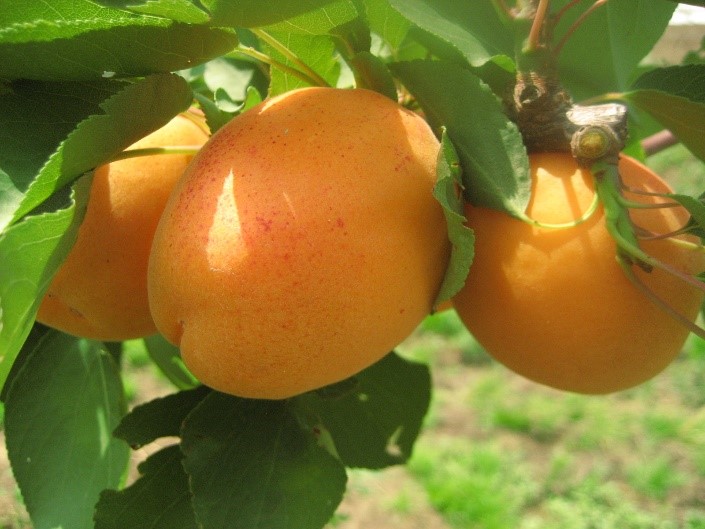
Pear
Abbe Fetel
Parents: French cultivar of unknown origin, cultivated by abbot Fetel in Chessy-les-Mines about 1866.
Tree: The tree is moderately vigorous and develops a well-branched crown. It produces numerous young shoots. Before it reaches full bearing capacity, it produces fruit mainly on slender branches and mixed fruiting shoots, and later on, it bears over 80 % of fruit on the spurs of predominantly two-year-old wood.
Ripening period: It ripens in early September.
Fruit: The fruit is medium to large in size, pear-shaped, with a specific very elongated neck. The petiole is very short and firm. Since one side of the neck is significantly more developed, the top of the neck is always curved. The skin is semi-thin, but firm. The main colour is light green, which changes to straw-yellow as it ripens, and smaller portions of the skin may acquire a light-red blush on the sunny side.
Other characteristics: An autumn cultivar. If the fruits are harvested too early, they cannot develop the proper aroma while in storage. After the harvest, the fruits tolerate transport and handling well. This cultivar does not have satisfactory graft compatibility with quince rootstocks. It thrives best in moderately warm regions with slightly higher relative air humidity. Regions that are too hot or too cold are not suitable for this cultivar.
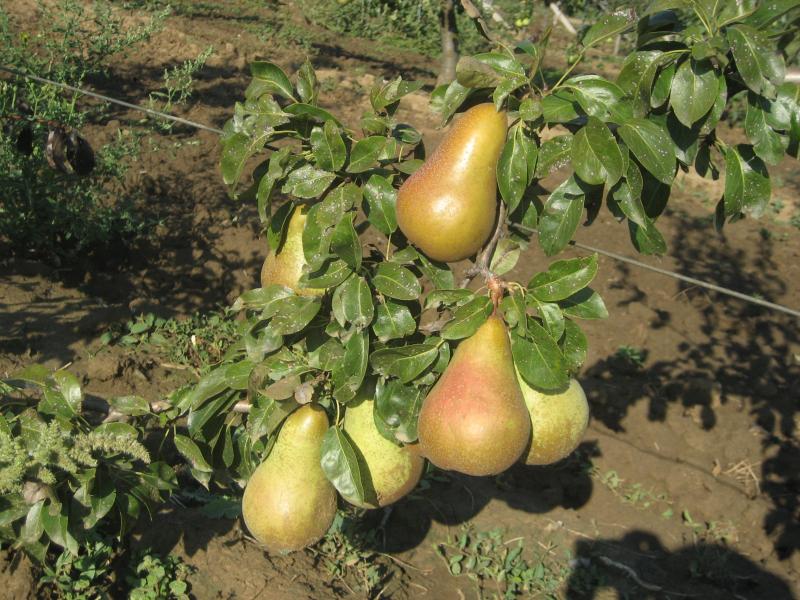
Etrusca
Parents: Italian cultivar created by crossing the cultivars Coscia x Gentile.
Tree: Vigorous. Semi-upright growth habit. It produces fruit on spurs and mixed fruiting branches.
Ripening period: It ripens in late June.
Fruit: The fruit is medium-sized, piriform to round in shape. The skin is smooth and light green. Approximately 40% of the skin is red blushed on the sunny side. The flesh is white, with good flavour and distinct aroma. The fruit is not suitable for long storage, but it is not as sensitive to handling as the June Beauty.
Other characteristics: It is a regular and heavy cropper. It flowers moderately early and pollinates well with Abbe Fetel.
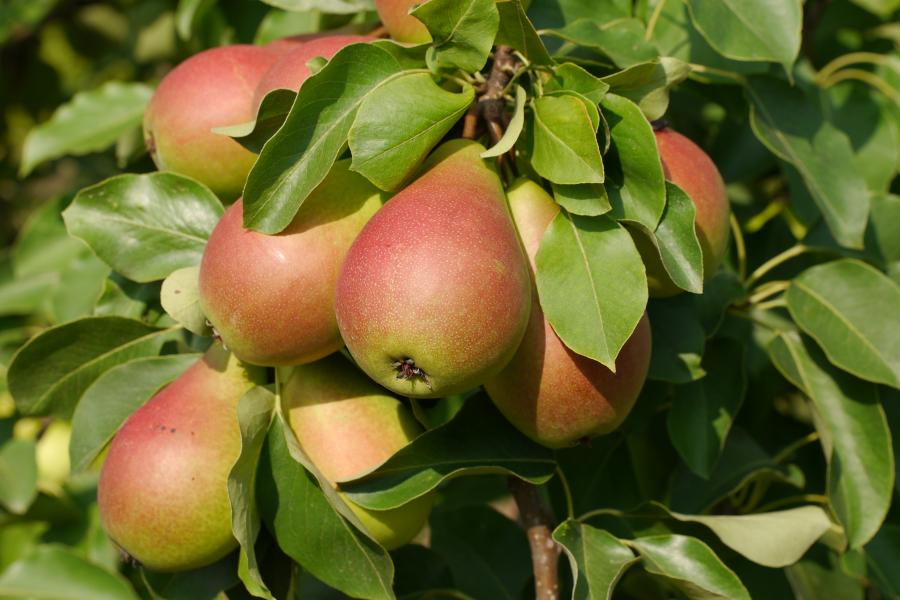
June Beauty
Tree: Very vigorous in its first years. The vigour decreases when fruit bearing begins. Growth habit: upright.
Ripening period: Early June.
Fruit: The fruit is medium-sized, very aromatic and flavourful. It is not suitable for longer storage.
Other characteristics: The trees grow predominantly upright, so in the first few years, new branches should be bent. It is a cultivar of local importance because it is not suitable for handling and storage. Once it reaches full bearing capacity, it is necessary to renovate the tree regularly for the quality of the fruits. For optimal quality, the fruits need to be thinned.
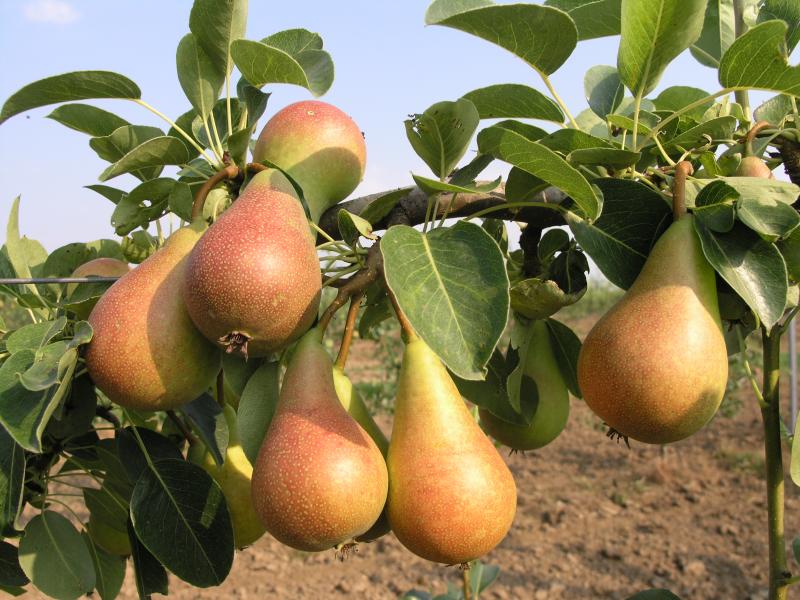
Packhams Triumph
Parents: Australian cultivar is the result of a cross between Belle Angevine x Williams. The breeding was carried out by C. H. Packham in 1896.
Tree: The tree is initially moderately vigorous, and later on less vigorous. Moderately branched. The branching angle is not large, so it is necessary to bend the branches. It bears fruit on all types of fruit-bearing wood. It does not have satisfactory graft compatibility with quince rootstocks. As a young tree and seedling, it has a very irregular branch growth, which distinguishes it from other cultivars.
Ripening period: It ripens in mid-September.
Fruit: The fruit is medium-sized and pear-shaped, with non-smooth surface. The petiole is moderately long. The skin is thin and firm, light green in colour. The pulp is white, and the texture is fine and little sandy. Aroma and fragrance are pleasant, although less intense than in Williams. The fruits have long storage life.
Other characteristics: A late autumn cultivar that is very similar to Williams. It should be grown more extensively, since it is well accepted on the market.
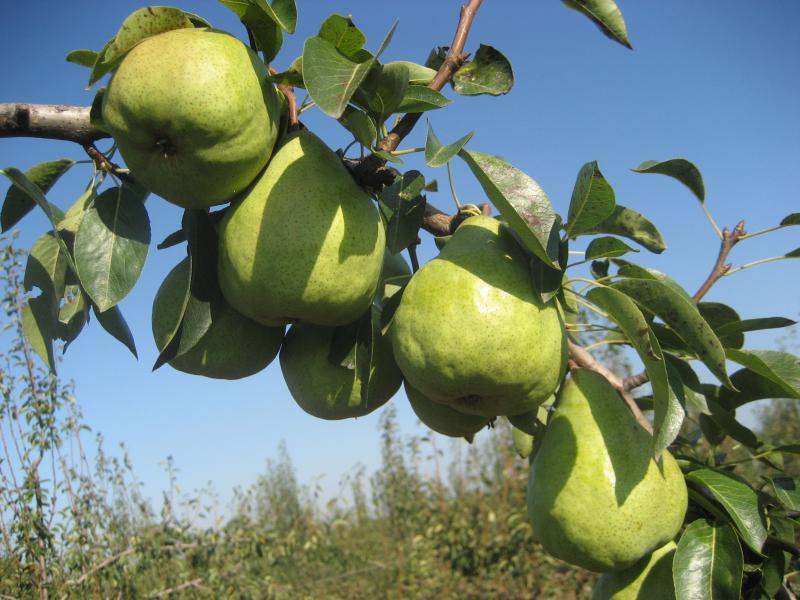
Williams Pear
Parents: English variety of unknown parents, found in 1770 by Mr Stair, a teacher, as a chance seedling. Nurseryman Richard Williams later acquired the variety, and started cultivating it under his own name.
Tree: Moderately vigorous with pronounced higher, upright branches. Due to graft incompatibility with quince rootstocks, it is grafted on to seedling rootstocks or interstocks.
Ripening period: It ripens in mid-August.
Fruit: The fruit is medium-sized. The fruit has a classic pear shape, with slightly bumpy surface. The petiole is short and firm. The skin is thin, with a glossy sheen. The main colour of the fruit is light green, which turns into lemony yellow when fully ripe. Sometimes, the cover colour appears on the sunny side in the form of a red blush, which adds to the attractiveness of the fruit. The pulp is yellowish-white, with fine texture and very small stone cells. It is juicy and melting, with a delicate nutmeg aroma.
Other characteristics: Late summer cultivar with excellent characteristics, nowadays used more for processing than for fresh consumption.
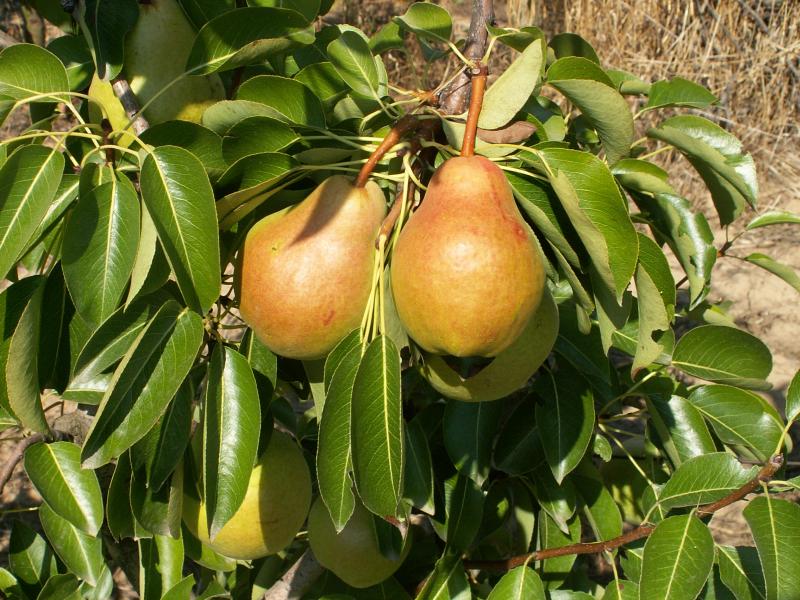
Quince
Cydora Robusta
Origin: Germany
Tree: The tree is vigorous with sharp branching angles.
Ripening period: It ripens in mid-October, and is a regular and heavy cropper.
Fruit: The fruit is large and bright yellow.
Other characteristics: Tolerant to fire blight and leaf spot. It is suitable for all types of processing and has a long storage life.
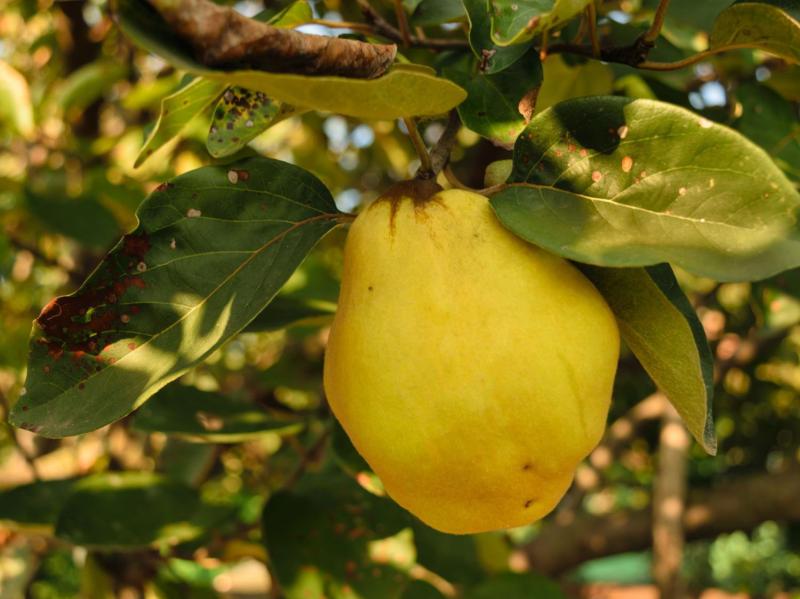
Leskovačka
Origin: Serbia
Tree: The tree is moderately vigorous with a wide pyramidal crown.
Ripening period: It ripens in early October, and is a regular and heavy cropper.
Fruit: The fruit is medium-sized and apple-shaped. It is very aromatic and highly suitable for processing.
Other characteristics: This cultivar should be planted at a good planting site, which is not low-lying in relation to the surrounding terrain and which has sufficient air flow in order to minimise pathogens. The cultivar is partially self-fertile and bears better in the presence of other cultivars as pollinators.
